Let me structure this properly and ensure I cover a variety of aspects like design elements, colors, materials, lighting, storage, layouts, etc.Farmhouse kitchens continue to capture hearts with their perfect blend of rustic charm and modern functionality. These timeless spaces emphasize natural materials, unpretentious design, and cooking spaces that can accommodate large meals, creating environments that feel both collected-over-time and perfectly imperfect. While traditional farmhouse style has evolved, the core principles remain: simplicity, functionality, and warmth, often featuring classic materials such as wicker, wood, and linen. Whether you're drawn to the emerging "soft modern" and transitional styles that blend modern and traditional elements, or prefer the rich, inviting colors like warm greys, deep burgundies, and earthy greens alongside warm wood accents that define 2025's farmhouse aesthetic, these design ideas will help you create a kitchen that serves as the true heart of your home.
1. Classic Farmhouse Sink as the Kitchen Centerpiece
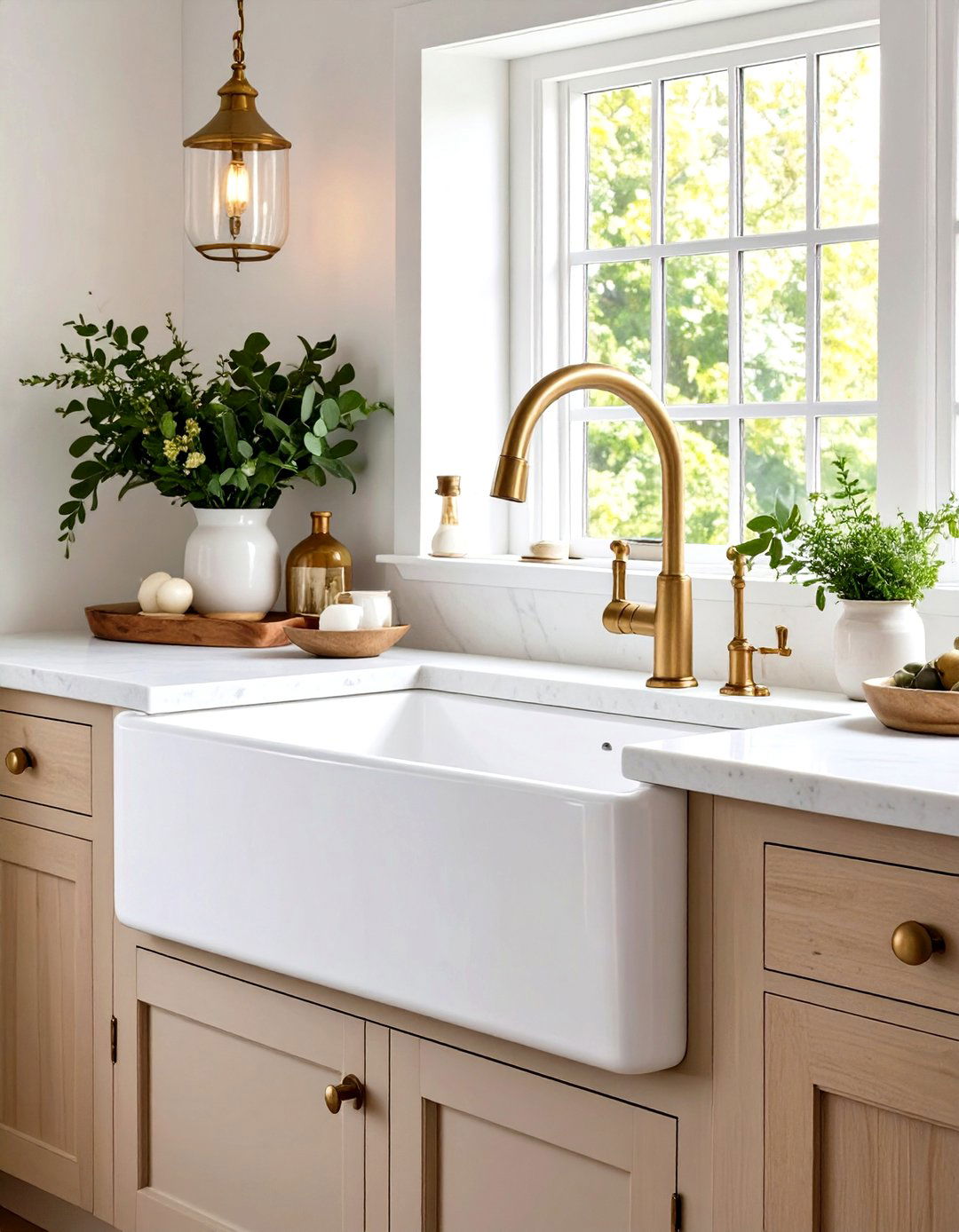
The iconic apron-front farmhouse sink remains the ultimate focal point for any farmhouse kitchen design. This classic farmhouse sink features a deep, wide basin often made of porcelain or stainless steel, capable of catering to the cooking and cleaning needs of large, farm-to-table style meals. Choose a substantial 30-inch or larger fireclay sink in crisp white to create an authentic farmhouse aesthetic that doubles as both functional workspace and visual anchor. While ceramic is the most popular finish, engineered stone and stainless steel are also great options. Pair your farmhouse sink with an unlacquered brass bridge faucet that will develop a beautiful patina over time, enhancing the lived-in character that makes farmhouse kitchens so appealing and inviting for daily family life.
2. Shaker-Style Farmhouse Kitchen Cabinets in Warm Neutrals
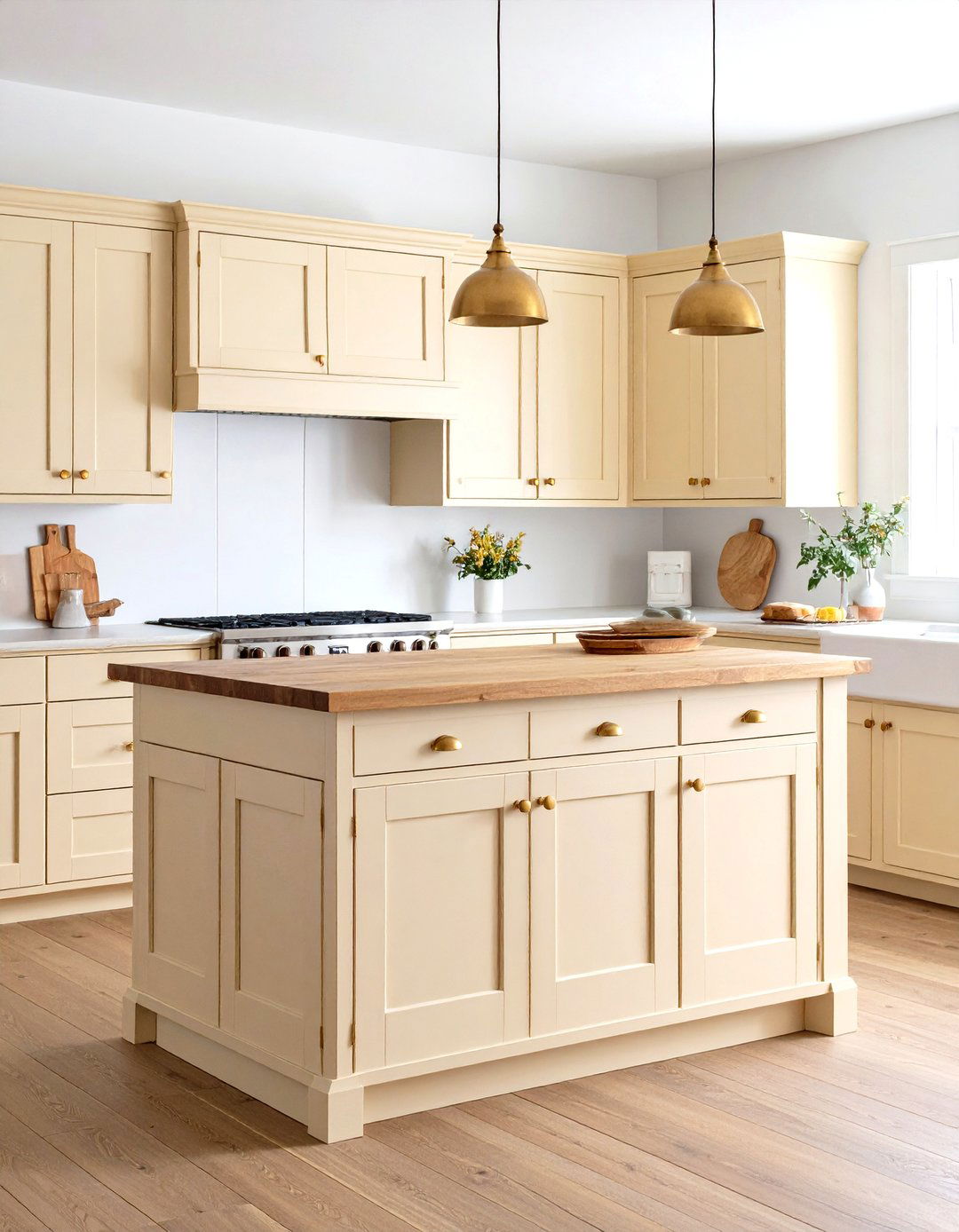
Embrace the timeless appeal of Shaker-style cabinetry painted in 2025's trending warm neutral tones for your farmhouse kitchen. We are installing cabinets in rich but pale creams – clotted cream, which works subtly alongside muted butter yellow tones, just a shade or two darker. These simple yet elegant cabinet designs focus on practical craftsmanship with clean lines and recessed panels that complement any farmhouse aesthetic. Shaker-style kitchen cabinets are simple yet boast a charming elegance that brings your farmhouse style to life. Consider pairing cream or sage green painted cabinets with natural wood tones on kitchen islands to create visual depth. The understated beauty of Shaker cabinets allows other farmhouse elements like vintage hardware and open shelving to shine while maintaining the clean, uncluttered look that defines modern farmhouse design.
3. Open Shelving for Farmhouse Kitchen Storage and Display
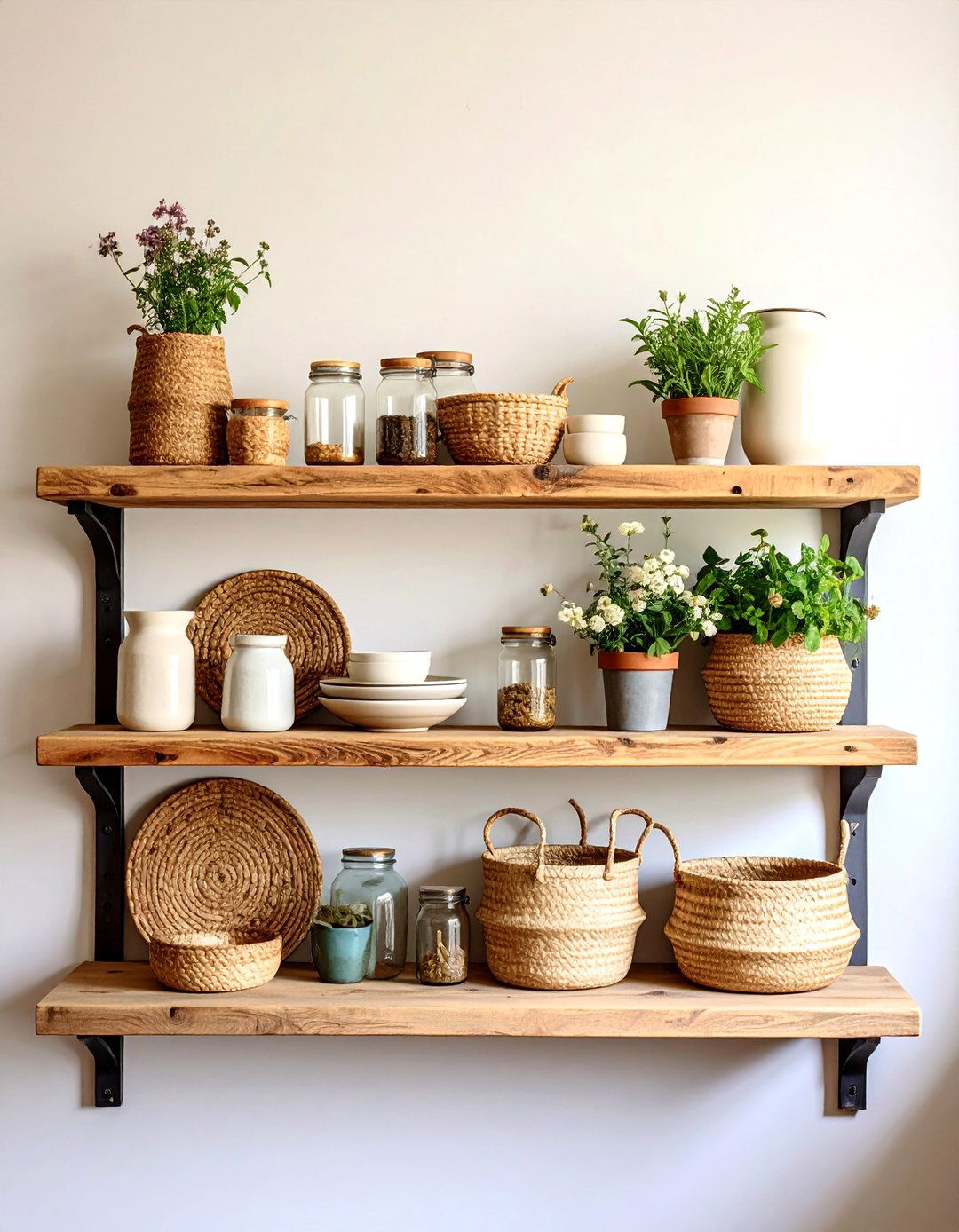
Replace upper cabinets with open wooden shelving to achieve an authentic farmhouse kitchen aesthetic that feels relaxed and welcoming. Designer Kate Abt left the shelves open in this dirty kitchen, giving the space a less structured look and allowing for a more relaxed vibe. Install sturdy reclaimed wood planks or new boards with a weathered finish to display your everyday dishes, vintage collections, and practical items like mason jars filled with pantry staples. Skip the upper cabinets and display all of your kitchen items on long wooden shelves. Farmhouse spaces are all about embracing a collected, lived-in look. This storage solution not only maximizes visual space but encourages you to keep beautiful, functional items within easy reach. Style your farmhouse kitchen shelves with a mix of ceramic dishes, woven baskets, and potted herbs to create an effortlessly curated display.
4. Shiplap Accent Walls in Farmhouse Kitchens
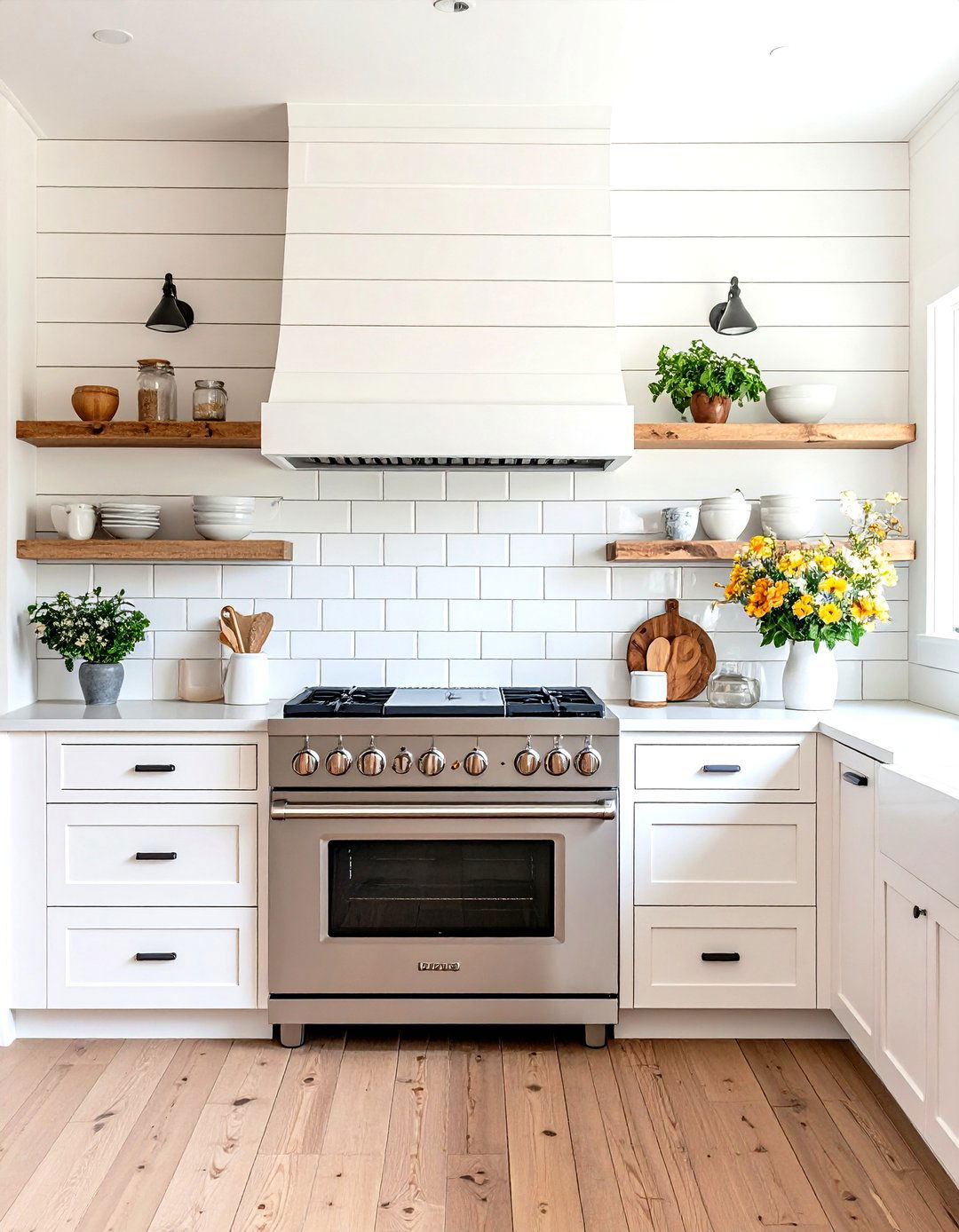
Transform your farmhouse kitchen walls with classic shiplap paneling that adds instant rustic charm and architectural interest. Classic American farmhouse style includes shiplap, exposed wood beams, and open shelving. Paint your shiplap in soft whites or muted colors to create texture without overwhelming the space, or leave natural wood tones exposed for a more rustic approach. Shiplap helps add clean lines to the space, creating a sleek appearance that marries perfectly with rustic design elements. Consider installing shiplap as a backsplash behind your range or as an accent wall behind open shelving to highlight your farmhouse kitchen's most important features. Shiplap and subway tile proves to be a winning combination in farmhouse kitchens, bringing texture into a neutral space. The horizontal lines of shiplap can also make smaller farmhouse kitchens appear wider and more spacious.
5. Reclaimed Wood Farmhouse Kitchen Islands
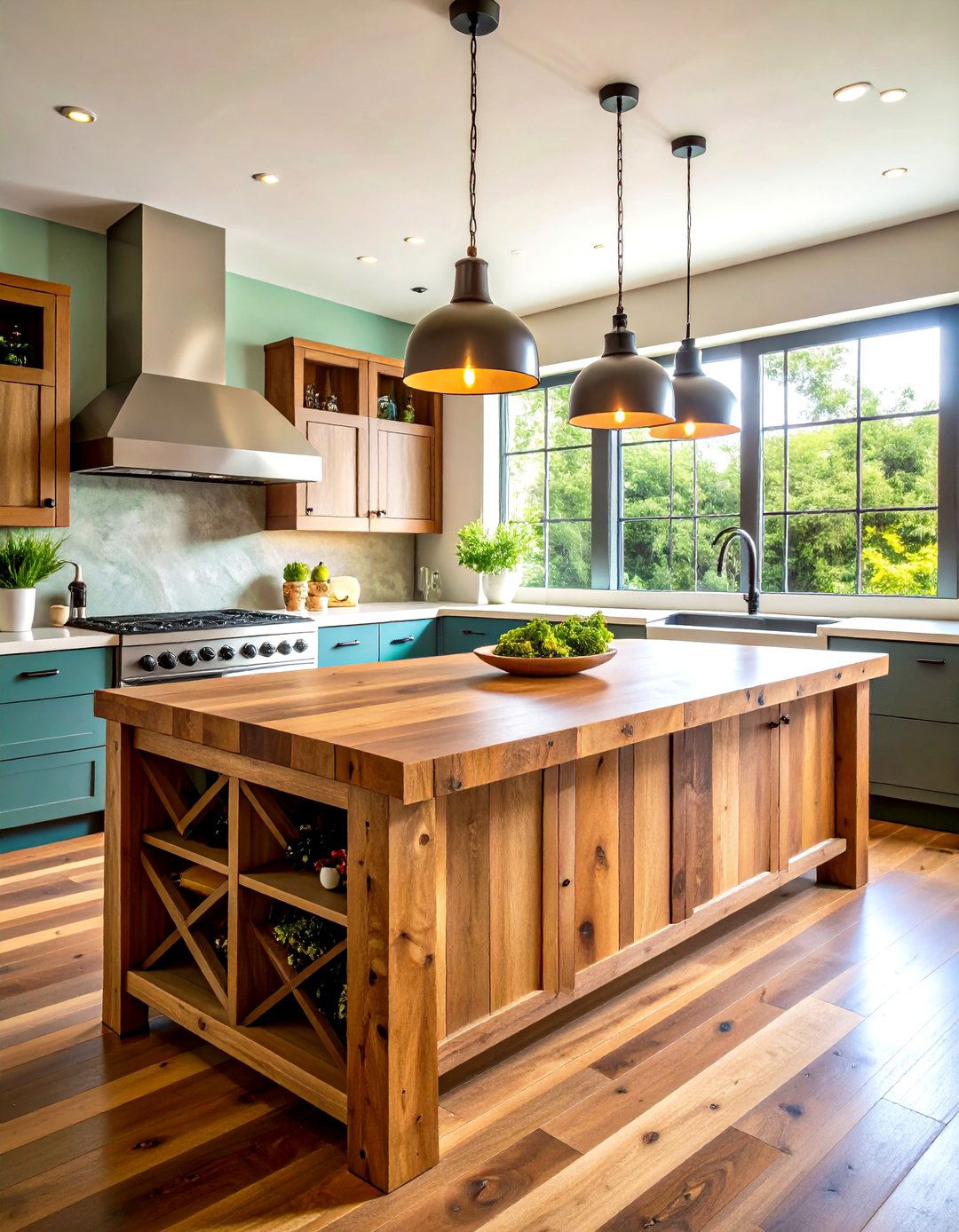
Create a stunning focal point with a farmhouse kitchen island crafted from reclaimed wood or designed to look authentically aged. A custom island crafted from antique white oak can serve as both functional workspace and gathering spot for family meals and casual conversations. In place of a more traditional island, a large farmhouse kitchen table stands in the center of the room to welcome family gatherings. Choose substantial pieces with visible wood grain and natural imperfections that tell a story of craftsmanship and history. This farmhouse kitchen effortlessly pairs stainless-steel appliances, clean-lined white cabinetry, and sleek chrome pulls with an island table with a rustic metal base and chunky butcher-block top. Consider incorporating storage solutions like open shelving or wine racks into your island design, and top it with thick butcher block or natural stone for a surface that's both beautiful and practical for meal preparation.
6. Vintage Industrial Farmhouse Kitchen Lighting
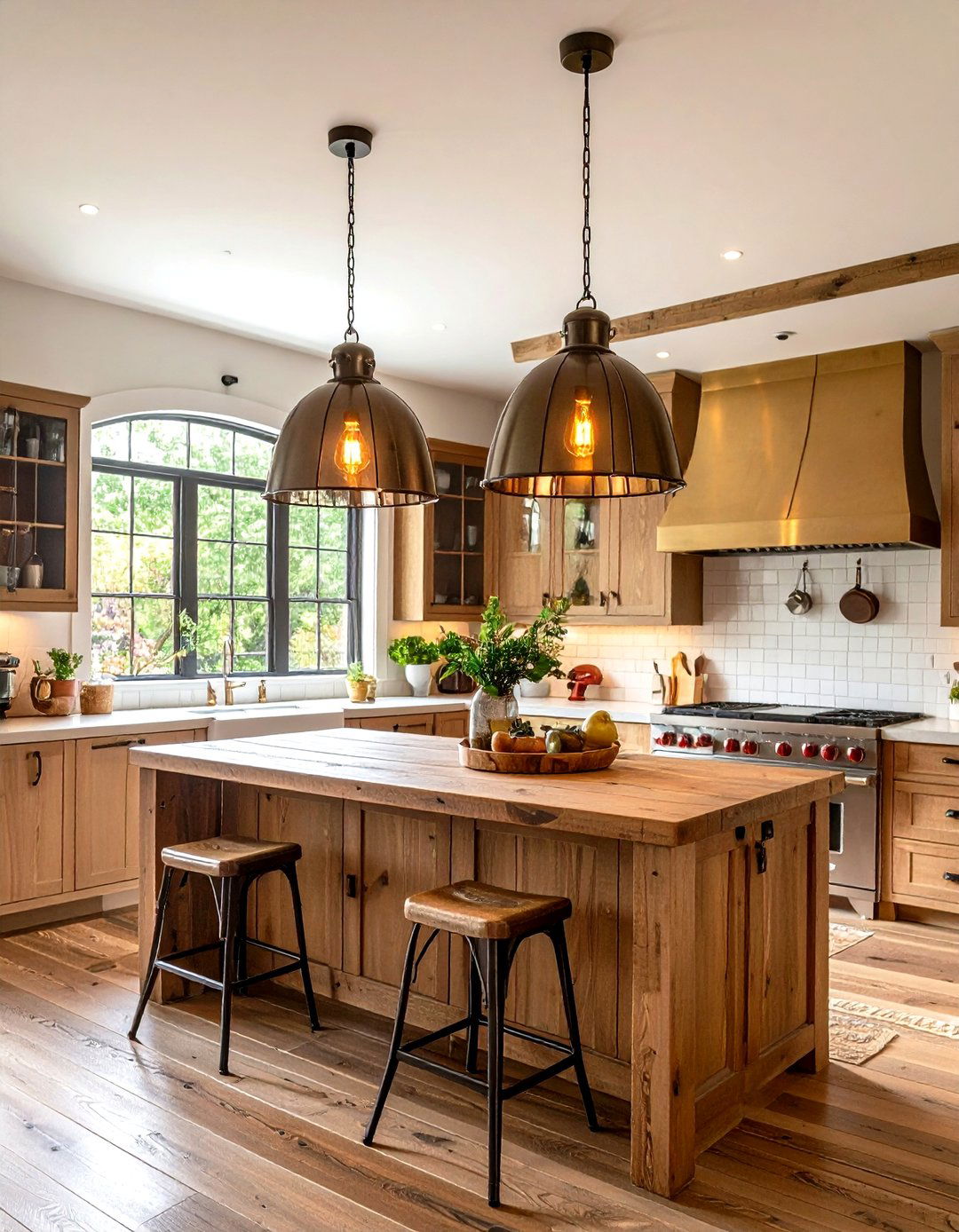
Illuminate your farmhouse kitchen with vintage-inspired industrial lighting that combines function with authentic character. Vintage touches abound in this sophisticated cabin kitchen, starting with the pair of 1950s industrial pendants that were rescued out of an old factory. Choose pendant lights with metal cages, exposed Edison bulbs, or milk glass shades hung over islands and dining areas to create warm, inviting pools of light. Industrial pendants over the island, adjustable sconces highlighting the shelves below, and additional decorative sconces around the perimeter of a room create layered lighting perfect for farmhouse kitchens. Exposed LED filament bulbs ensure that despite the classic design of the light, it's still providing an energy efficient solution in a rustic setting. Mix different fixture styles like lantern-style pendants and brass sconces to add visual interest while maintaining the farmhouse aesthetic throughout your kitchen space.
7. Two-Tone Farmhouse Kitchen Cabinet Design
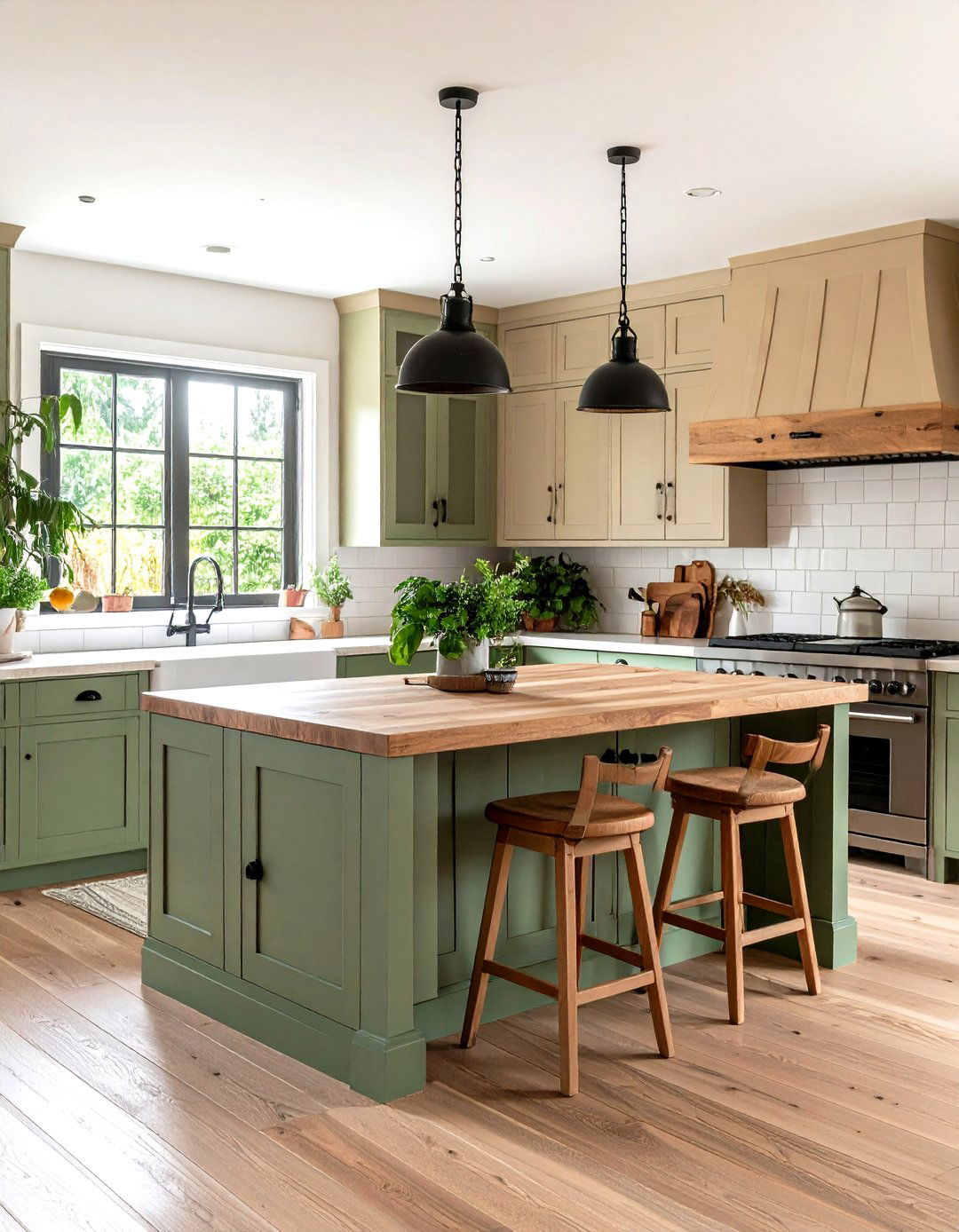
Embrace the trending two-tone cabinet approach to add depth and visual interest to your farmhouse kitchen design. Combining colors or textures is gaining traction for its ability to add depth and dynamism to a kitchen. Paint lower cabinets in rich, grounding colors like sage green or charcoal while keeping upper cabinets in crisp white or warm cream tones. Popular combinations include dark lower cabinets paired with light upper cabinets, or consider combining painted and natural wood finishes for authentic farmhouse appeal. Espinoza suggests combining grounding neutrals, like gray, mocha, or green, with natural wood finishes, like oak, walnut, and maple. This design technique allows you to incorporate trendy colors while maintaining the timeless quality that makes farmhouse kitchens so enduringly popular. The contrast creates visual weight at the base while keeping the upper portion light and airy.
8. Wide-Plank Hardwood Farmhouse Kitchen Floors
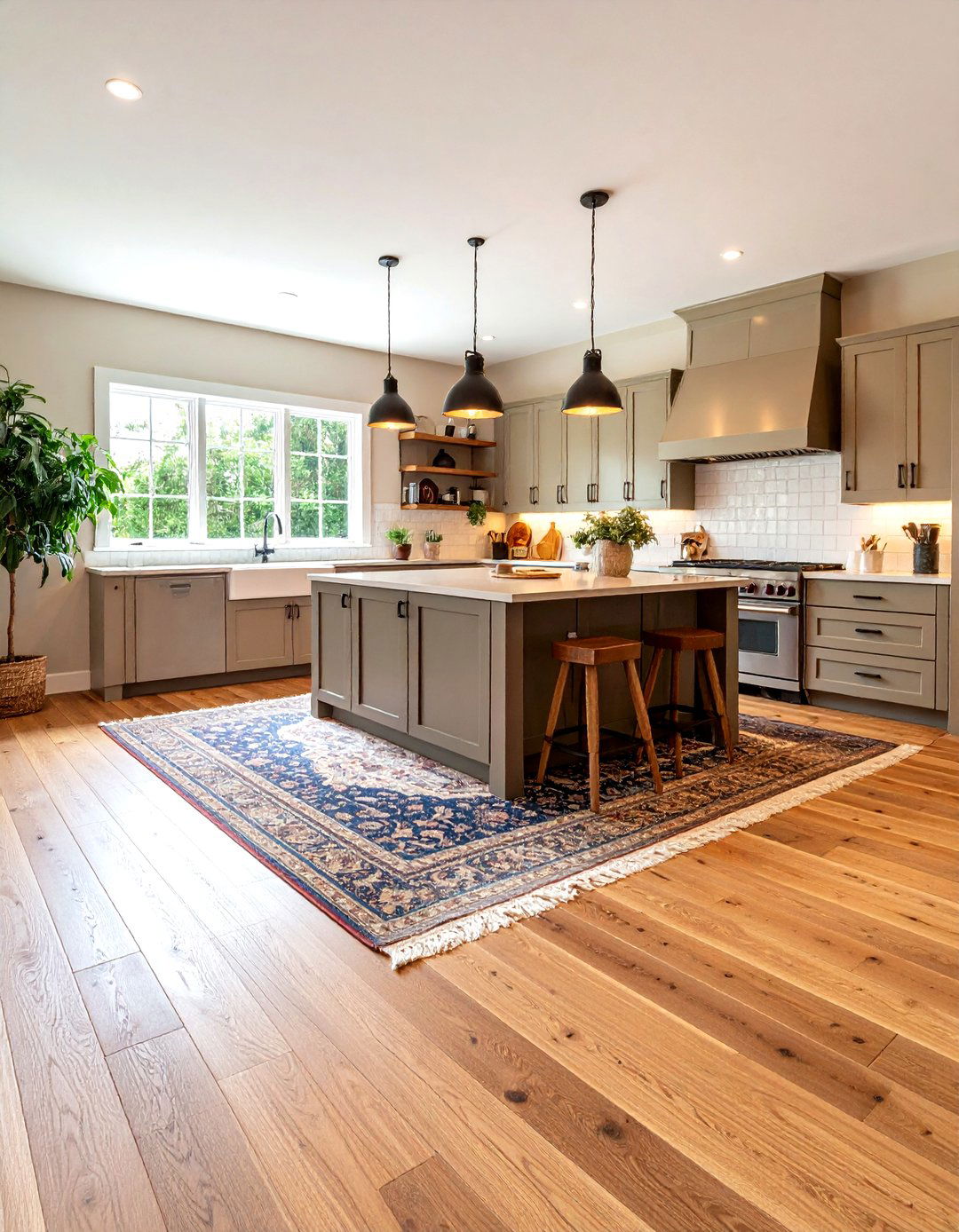
Install wide-plank hardwood flooring to establish the foundation for an authentic farmhouse kitchen aesthetic. Whether original or reclaimed, wide-plank hardwood floors are prized for the sense of character they bring to a farmhouse kitchen. Nicks and scratches welcomed and encouraged! Choose natural wood species like oak, pine, or hickory in wider planks that showcase the grain patterns and natural variations that give farmhouse kitchens their lived-in charm. Wide plank flooring made boasting natural wood tones, helping to round out the rustic design aesthetic. Consider distressed or hand-scraped finishes that add instant character, or allow new floors to develop patina naturally over time. Dark wood floor, installed on the diagonal, merge old and new. The substantial width of these planks creates visual impact and helps smaller farmhouse kitchens feel more spacious while maintaining the authentic character essential to farmhouse design.
9. Natural Stone Farmhouse Kitchen Countertops
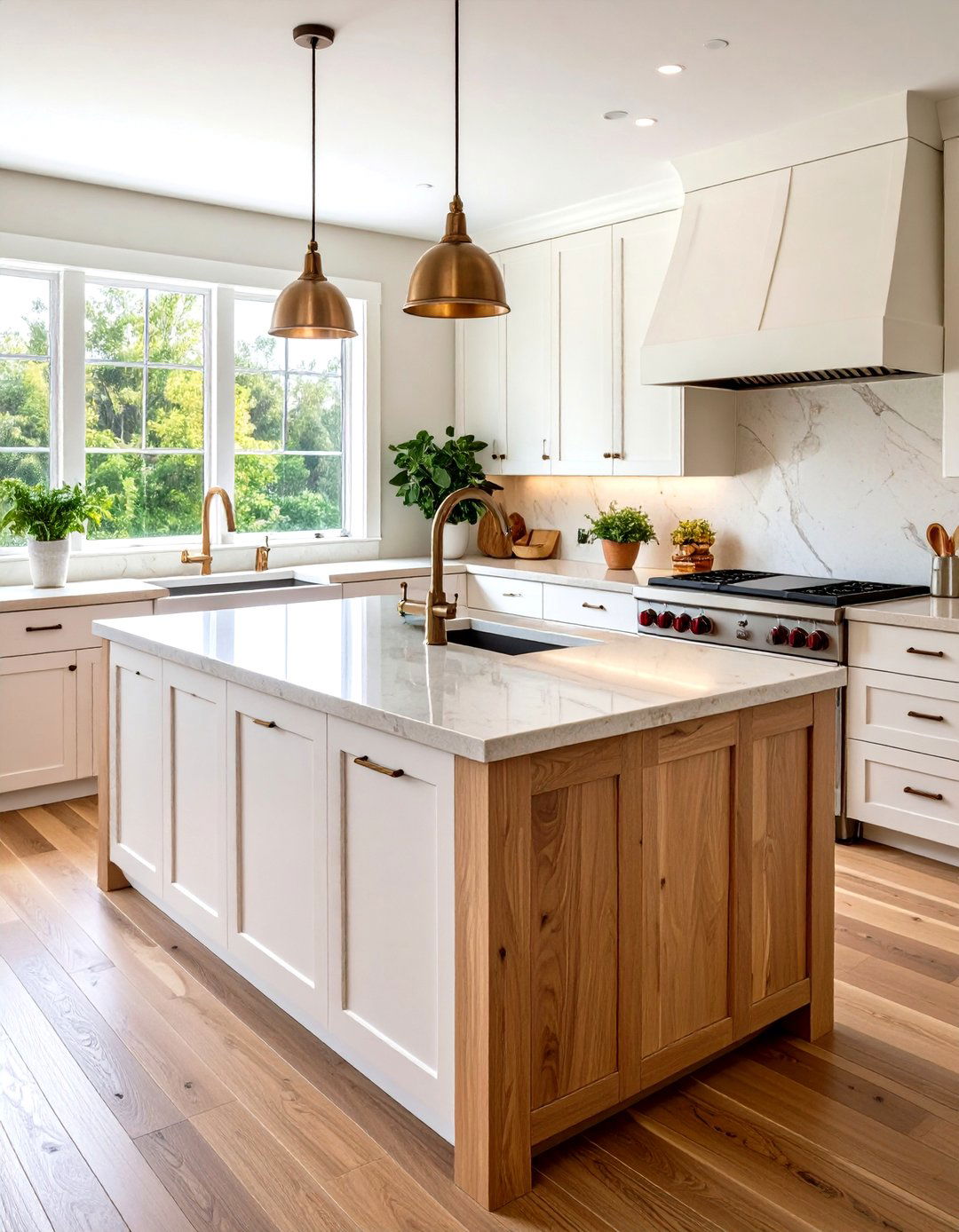
Choose natural stone countertops that bring organic beauty and durability to your farmhouse kitchen workspace. Marble is a great surface to bake on, butcher blocks are easy to maintain and wear over time so that the space really can feel the love in the kitchen. Consider honed soapstone, which develops a natural patina, or marble with subtle veining that complements the understated elegance of farmhouse design. Carrara marble countertops contrast with vintage-look bronze faucets and hardware that will gather patina over time. We love pairing white oak cabinets with an interesting piece of jade granite for countertops and backsplashes, creating a striking contrast between the warm wood and vibrant stone. These materials not only provide practical work surfaces but also add the natural textures and honest materials that define authentic farmhouse style. The subtle imperfections and natural variations in stone create visual interest while maintaining the timeless appeal that makes farmhouse kitchens so enduringly beautiful.
10. Subway Tile Farmhouse Kitchen Backsplashes
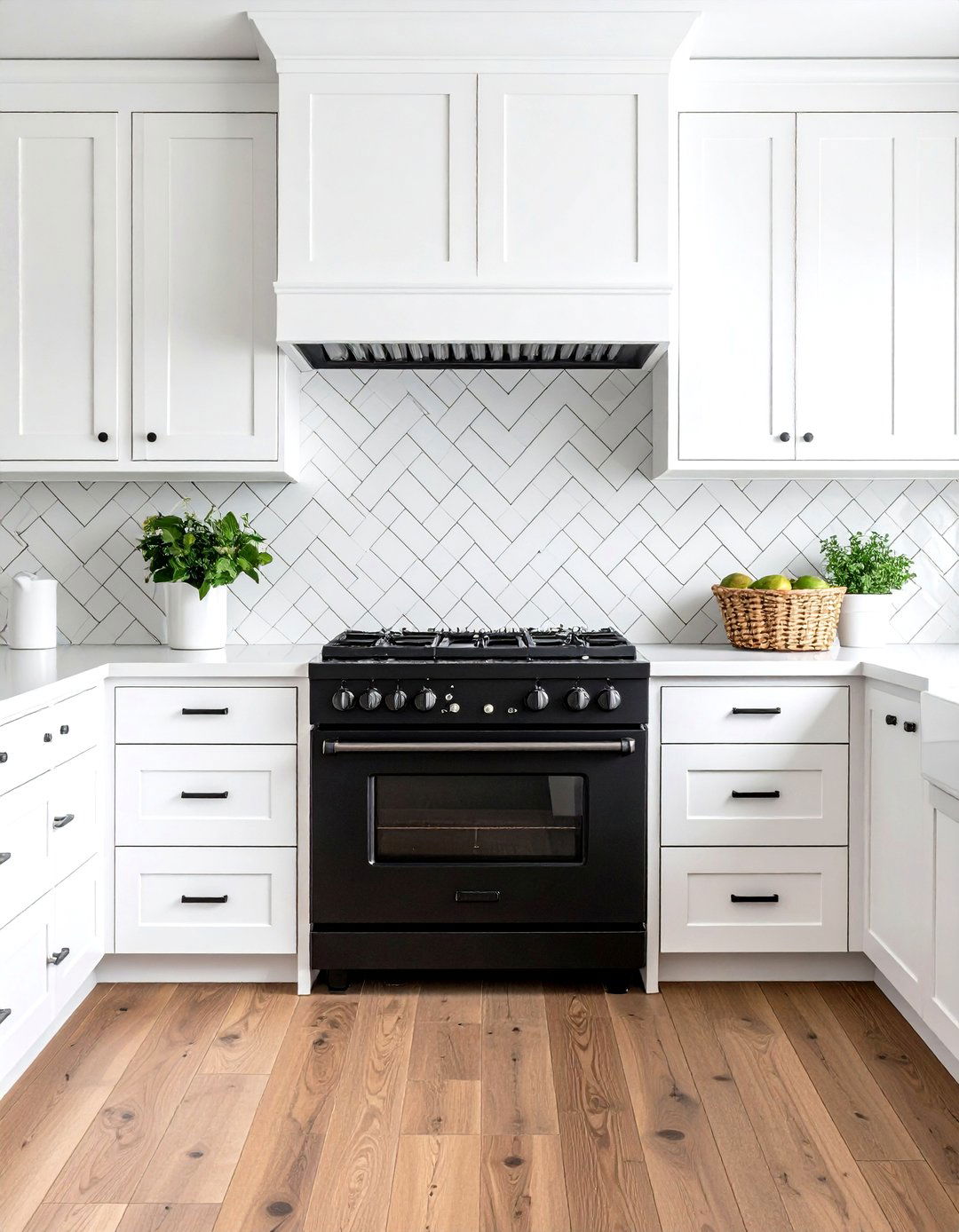
Create a classic farmhouse kitchen backdrop with timeless subway tile arranged in traditional or creative patterns. Shiplap and subway tile proves to be a winning combination in farmhouse kitchens, bringing texture into a neutral space. Install white subway tiles in a traditional running bond pattern for classic appeal, or arrange them in herringbone or vertical stack patterns for modern farmhouse flair. A shiny subway tile backsplash in marble, polished wood countertops, iron chandeliers, and more take classic farmhouse details and elevate them to wow-worthy status. Consider extending the tile from counter to ceiling behind your range or across the entire wall for maximum impact. Black countertops and hardware add modern touches to this classic farmhouse kitchen with white subway tile backsplash and shaker-style cabinetry. The clean lines and neutral color of subway tile provide the perfect backdrop for farmhouse elements like open shelving, vintage accessories, and natural wood details while maintaining the timeless quality essential to farmhouse design.
11. Farmhouse Kitchen Pantry with Barn Door Storage
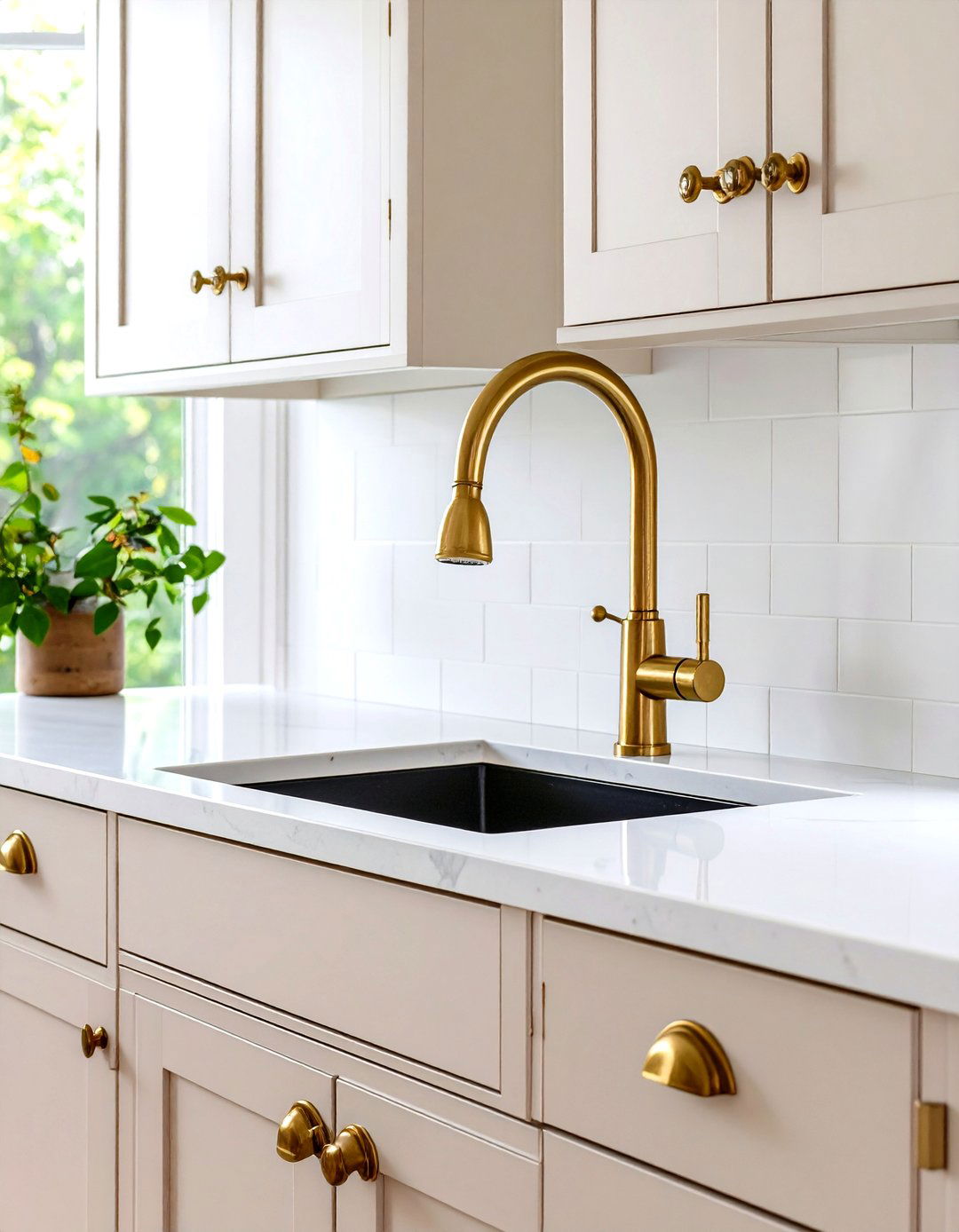
Install a sliding barn door to conceal your farmhouse kitchen pantry while adding authentic rustic character to the space. Barn doors are popular in a variety of design aesthetics, but they tie in perfectly with the theme of a rustic, farmhouse kitchen. Choose reclaimed wood or new lumber with a weathered finish for the door, and pair it with black iron hardware for an industrial touch. This popular accent makes for a great focal point in the space, allowing you to add a bit of your own personality and character to the kitchen. Inside the pantry, install floor-to-ceiling shelving and use woven baskets, glass jars, and vintage containers to organize supplies while maintaining the farmhouse aesthetic. A copper pantry door can also add unique metallic accents. The barn door serves both practical and decorative purposes, hiding storage while contributing to the collected-over-time feel that makes farmhouse kitchens so warm and inviting for daily family life.
12. Exposed Wood Beam Farmhouse Kitchen Ceilings
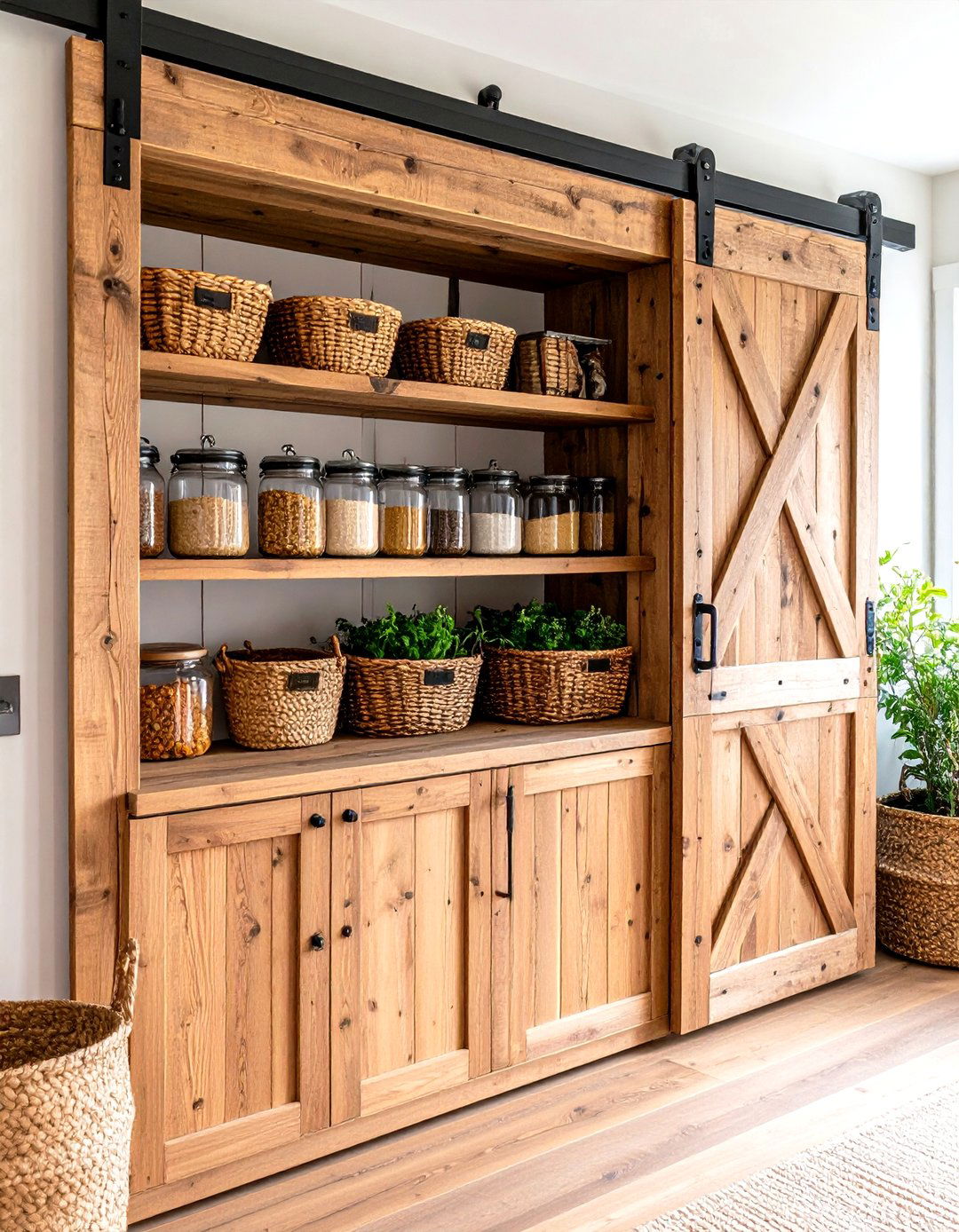
Add architectural drama and authentic farmhouse character with exposed wood beams across your kitchen ceiling. Classic American farmhouse style includes shiplap, exposed wood beams, and open shelving. Install reclaimed beams for genuine character or use new lumber treated to look aged for similar visual impact without the uncertainty of antique materials. Reclaimed white oak ceiling beams span this kitchen's length creating stunning visual interest. The wooden beams on the ceiling bring a lighter warmth with their honey-like color, helping bright kitchens feel more approachable and grounded. Consider varying the beam spacing and sizes for a more organic, collected-over-time appearance, or maintain consistent spacing for a more refined farmhouse look. The swag rope makes it look like it's nonchalantly tossed around the painted beams. These ceiling treatments work particularly well in kitchens with higher ceilings, creating intimate gathering spaces while showcasing the honest craftsmanship essential to farmhouse design.
13. Farmhouse Kitchen Window Treatments with Natural Fabrics
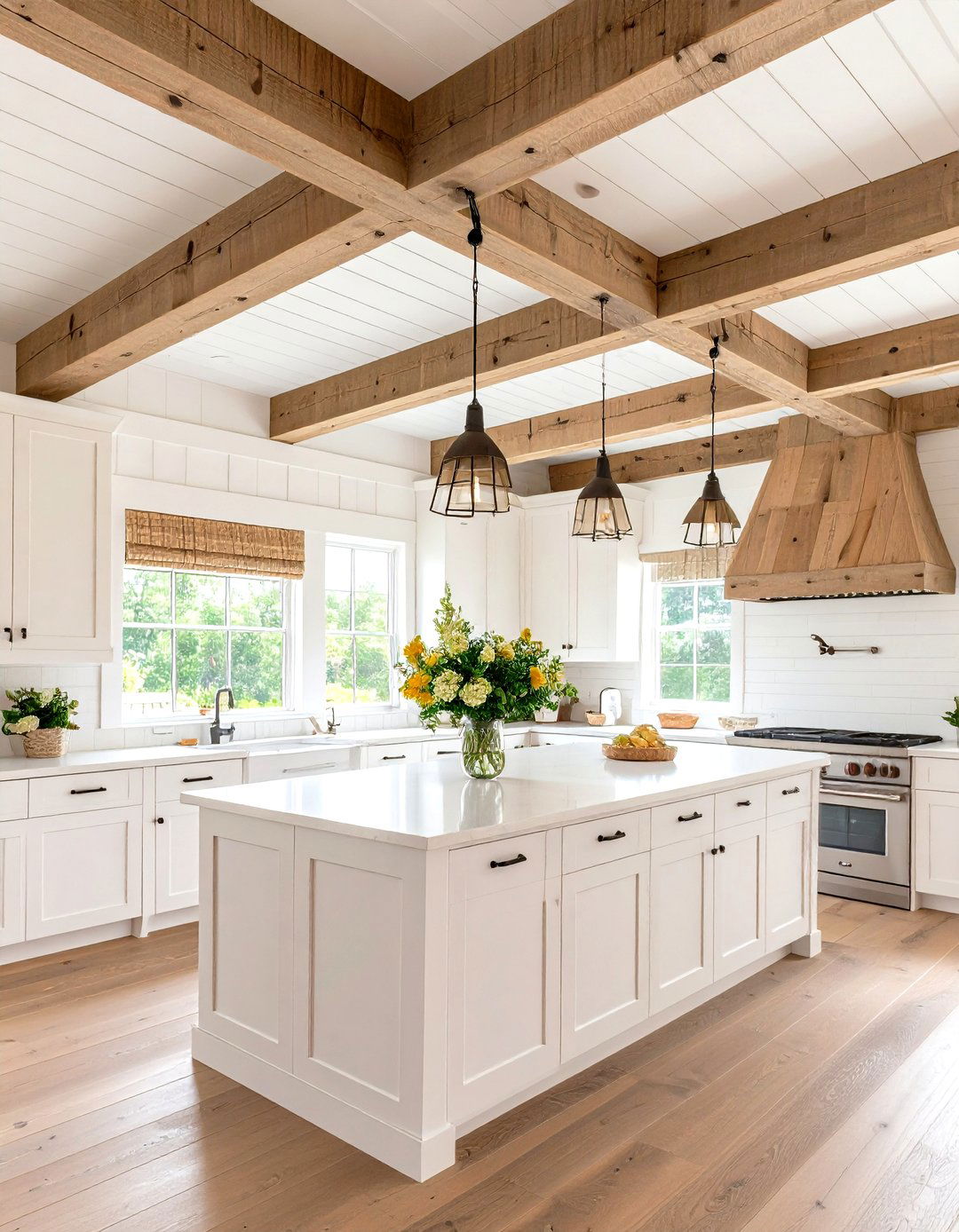
Dress your farmhouse kitchen windows with natural fabric treatments that filter light while maintaining the cozy, lived-in aesthetic. Plaid, gingham, burlap, toile and rustic linens are popular, with the latter often featuring pastoral or historical scenes from farming eras gone by. Choose simple cafe curtains in gingham or linen that allow natural light to pour in while providing privacy for ground-level windows. Burlap is a material that we often see in farmhouse style spaces, and it makes for a great window covering option, allowing for light to still filter through over the course of the day. Sweet gingham cafe curtains allow light to pour in. If you choose to install full length curtains in your kitchen, a linen material will contribute to your space's farmhouse aesthetic while allowing light to filter in nicely. Avoid heavy or formal treatments that would feel out of place in the relaxed farmhouse environment, instead choosing fabrics that complement your kitchen's natural color palette.
14. Vintage-Style Farmhouse Kitchen Hardware and Fixtures
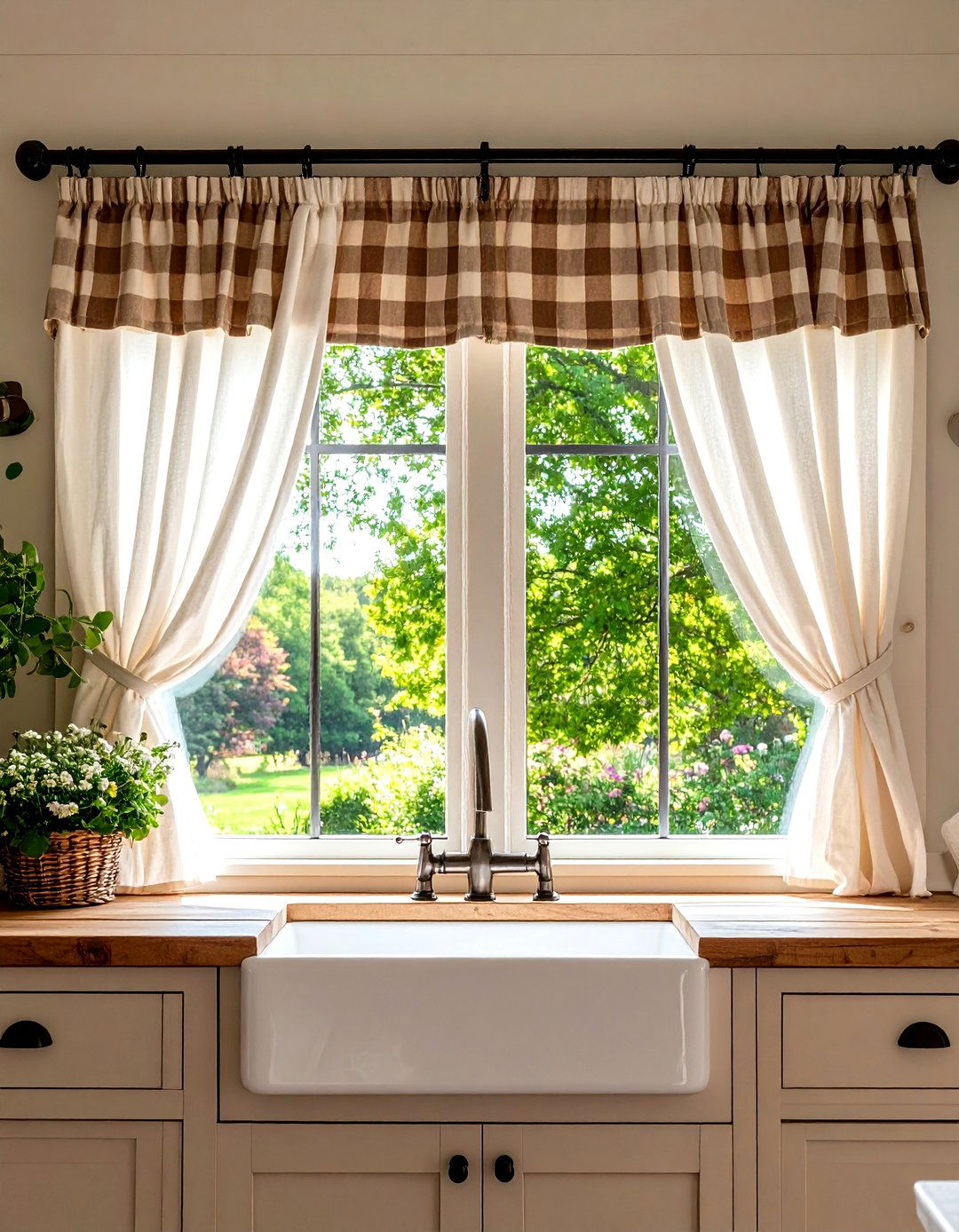
Select hardware and fixtures that reflect the authentic, aged character essential to farmhouse kitchen design. Brass hardware patinas naturally show the beauty of time passing, making unlacquered brass pulls, knobs, and faucets ideal choices for achieving genuine farmhouse appeal. Choose substantial, well-crafted pieces like bridge faucets, schoolhouse-style cabinet knobs, and bin pulls that feel sturdy and functional. Brass cabinet hardware matches the finish on the light fixtures creating cohesive design throughout the space. Farmhouse kitchen lighting ideas tend to the patinated and gently burnished, over shiny and bright finishes. Consider mixing metals like brass and black iron for visual interest while maintaining the authentic character that defines farmhouse style. Antiqued brass pendant shades and a copper pantry door can add unique metallic variety. The key is choosing pieces that look like they could have been collected over generations rather than purchased all at once from a single manufacturer.
15. Sage Green Farmhouse Kitchen Color Schemes
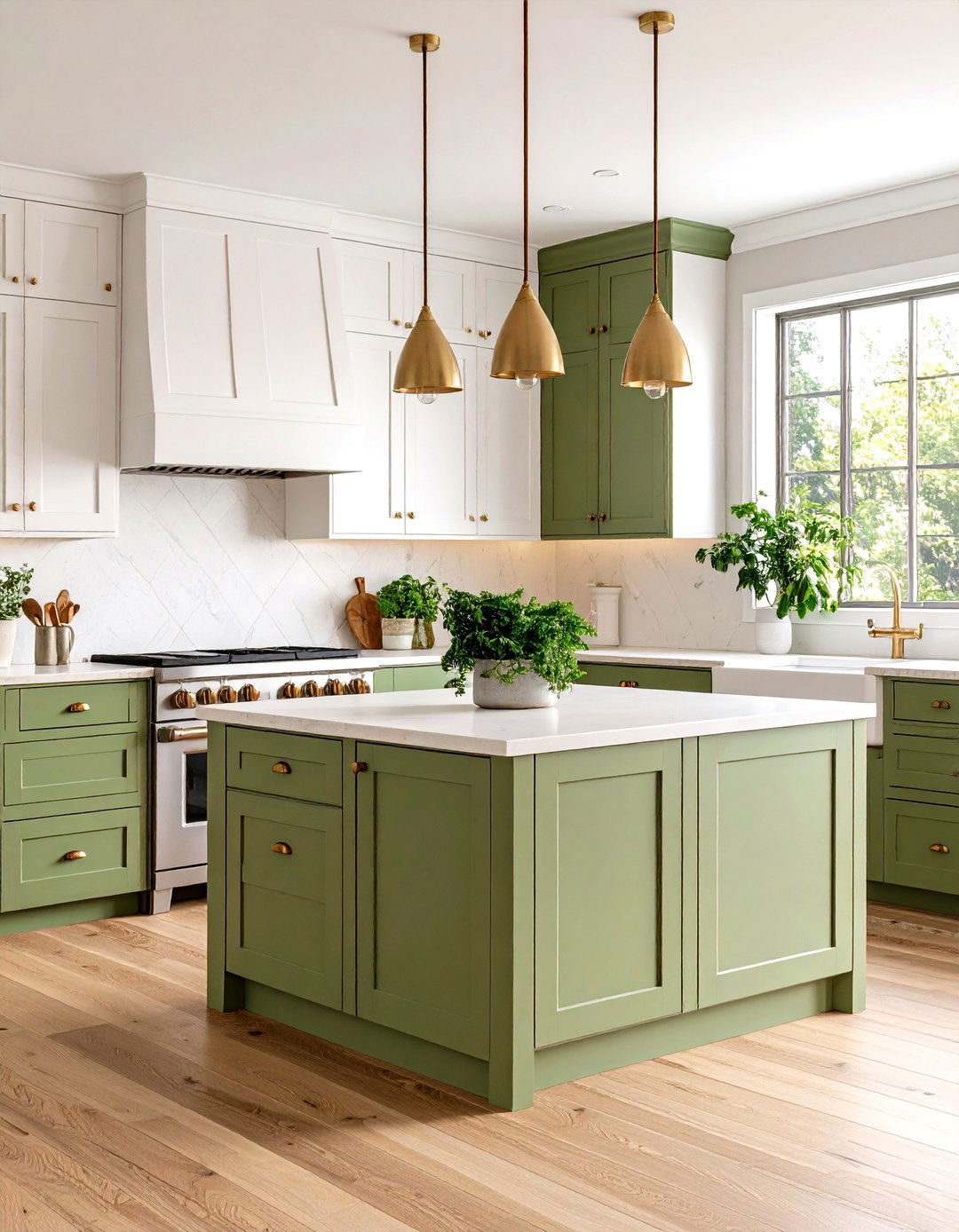
Embrace the calming beauty of sage green as your primary farmhouse kitchen color for a fresh, nature-inspired aesthetic. Topping the list among designers for 2025 is kitchen cabinetry painted an earthy green. With shades ranging from bright fern to deep forest, green kitchens have come a long way. Sage is a bright, calming, and earthy color that works great in kitchens. It can make smaller kitchens feel more open and inviting. Paint lower cabinets in soft sage while keeping upper cabinets white for a balanced two-tone approach, or use sage as an accent color on a kitchen island paired with cream-colored perimeter cabinets. Let's be honest, we all consider green as a neutral at this point. Every year, at least one shade dominates kitchen cabinet color trends. Sage also pairs well with chrome hardware, butcher block counters, and neutral colors. This versatile color works beautifully with natural wood tones, brass fixtures, and white subway tile to create a farmhouse kitchen that feels both timeless and current.
16. Mixed Material Farmhouse Kitchen Design Elements
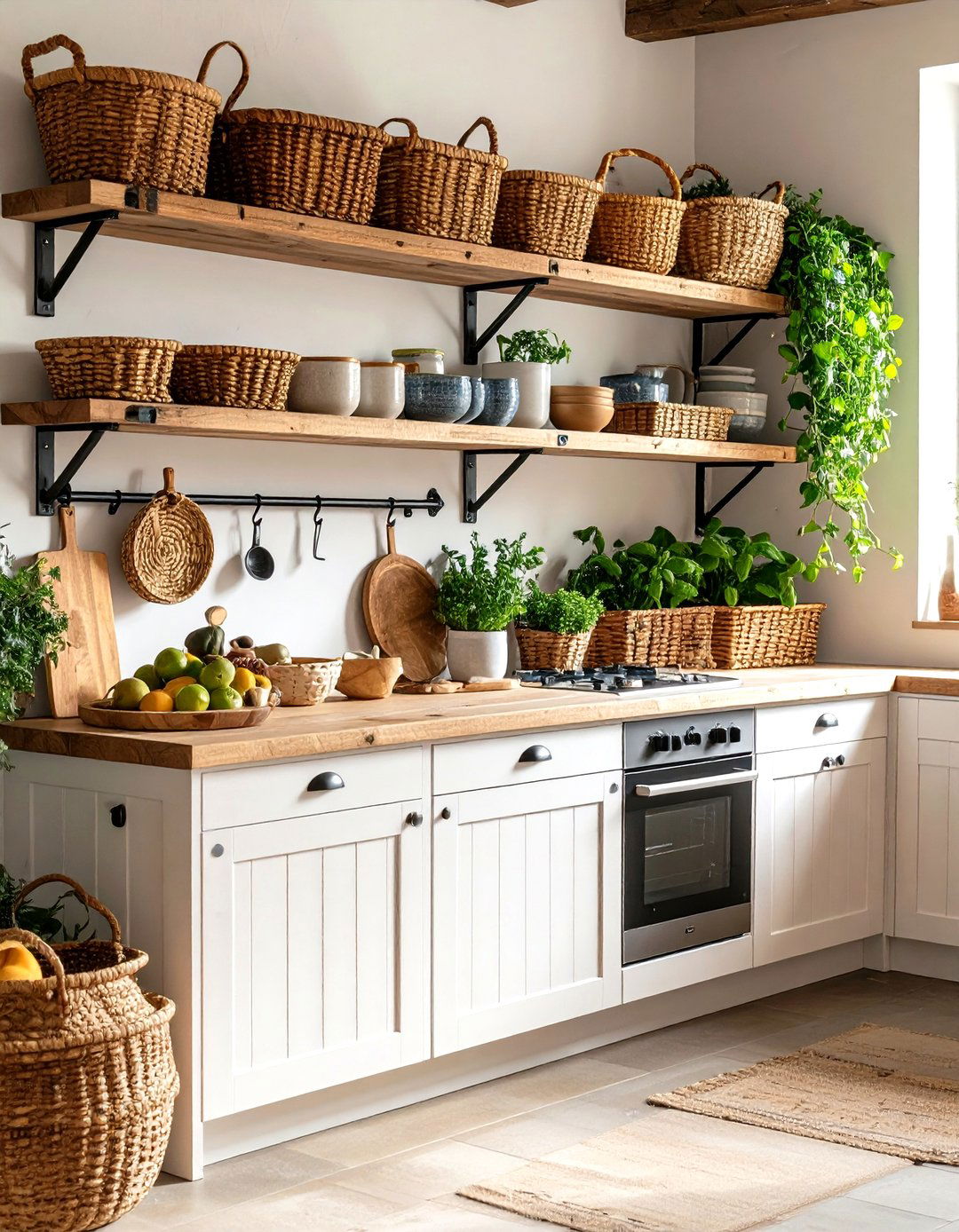
Create visual interest and authentic farmhouse character by thoughtfully combining different natural materials throughout your kitchen design. Mixed materials like wicker, wood, and metal accents add dimension while maintaining the honest, unpretentious aesthetic that defines farmhouse style. Brick, wood, and metal elements are balanced with a large runner that brings warmth and reinforces the kitchen's color palette. Combine reclaimed wood shelving with metal brackets, natural stone countertops with painted wood cabinets, and woven baskets with ceramic storage containers. Playing with materials can bring a unique look and feel to your kitchen with farmhouse details that play up the personality and character of the space. Backsplashes, countertops, and shelving are all great places to incorporate materials that add personality and style to your space. The key is maintaining balance while allowing each material to contribute its unique texture and character to the overall farmhouse aesthetic.
17. Farmhouse Kitchen Islands with Built-In Seating
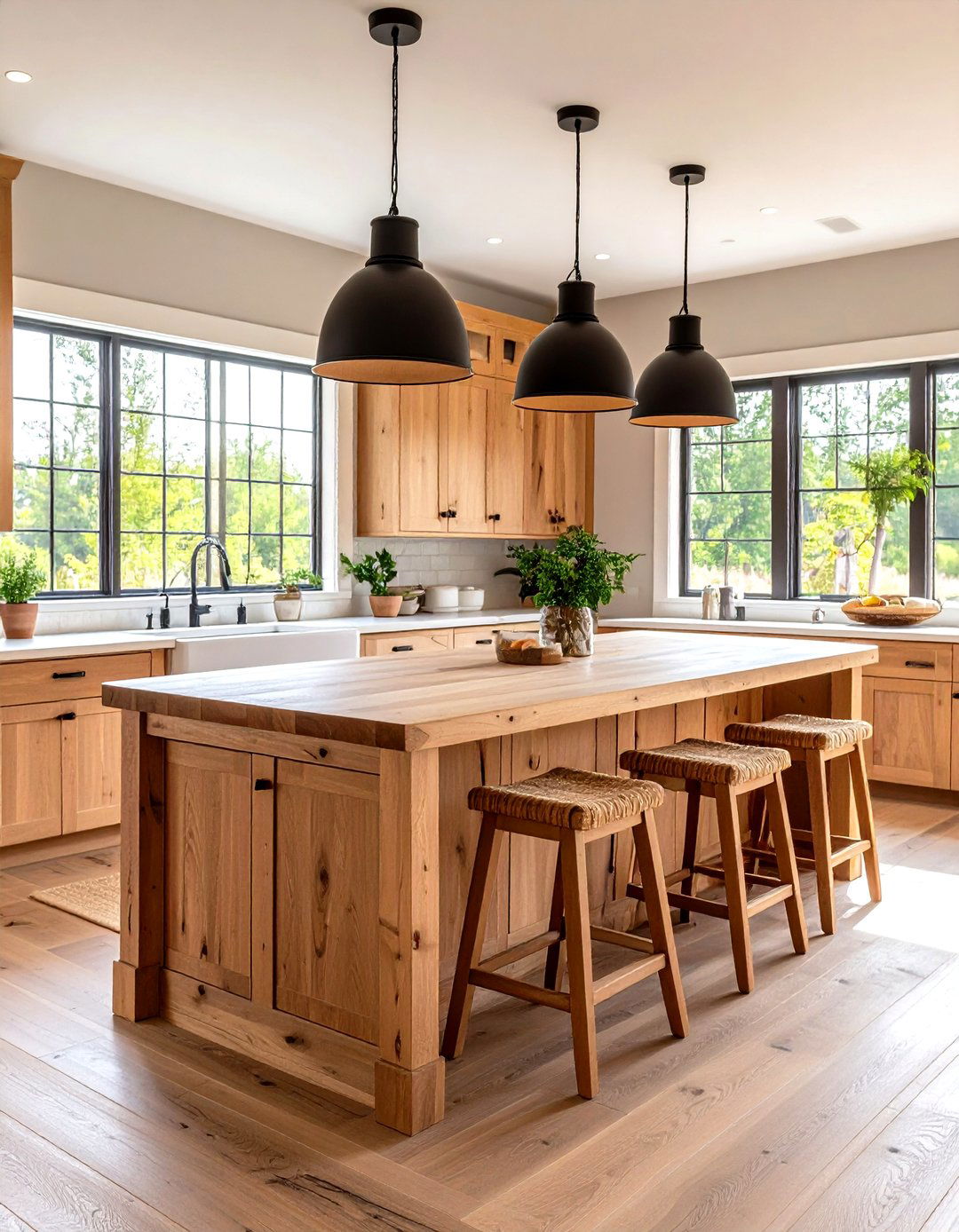
Design your farmhouse kitchen island to serve as both functional workspace and gathering spot with integrated seating options. An inviting atmosphere is essential to any farmhouse kitchen. A large island with stool seating beckons friends and family to sit down and stay awhile. The farmhouse kitchen is the heart of any home – and the kitchen island is the heart of the farmhouse kitchen. This is the spot where everyone can gather to keep the cook company, enjoy a meal or sip on a cup of tea. Choose sturdy wooden stools with rush seats or metal stools with vintage character that complement your island's design. Black pendant farmhouse kitchen lighting illuminates the space while adding a modern touch above islands with seating. Windsor chairs are always a nice classic bet, and they're comfortable to boot. Consider extending your island's countertop to create an overhang for comfortable knee space, or design a two-level island with a raised bar area for casual dining while maintaining workspace at standard counter height.
18. Farmhouse Kitchen Coffee and Beverage Stations
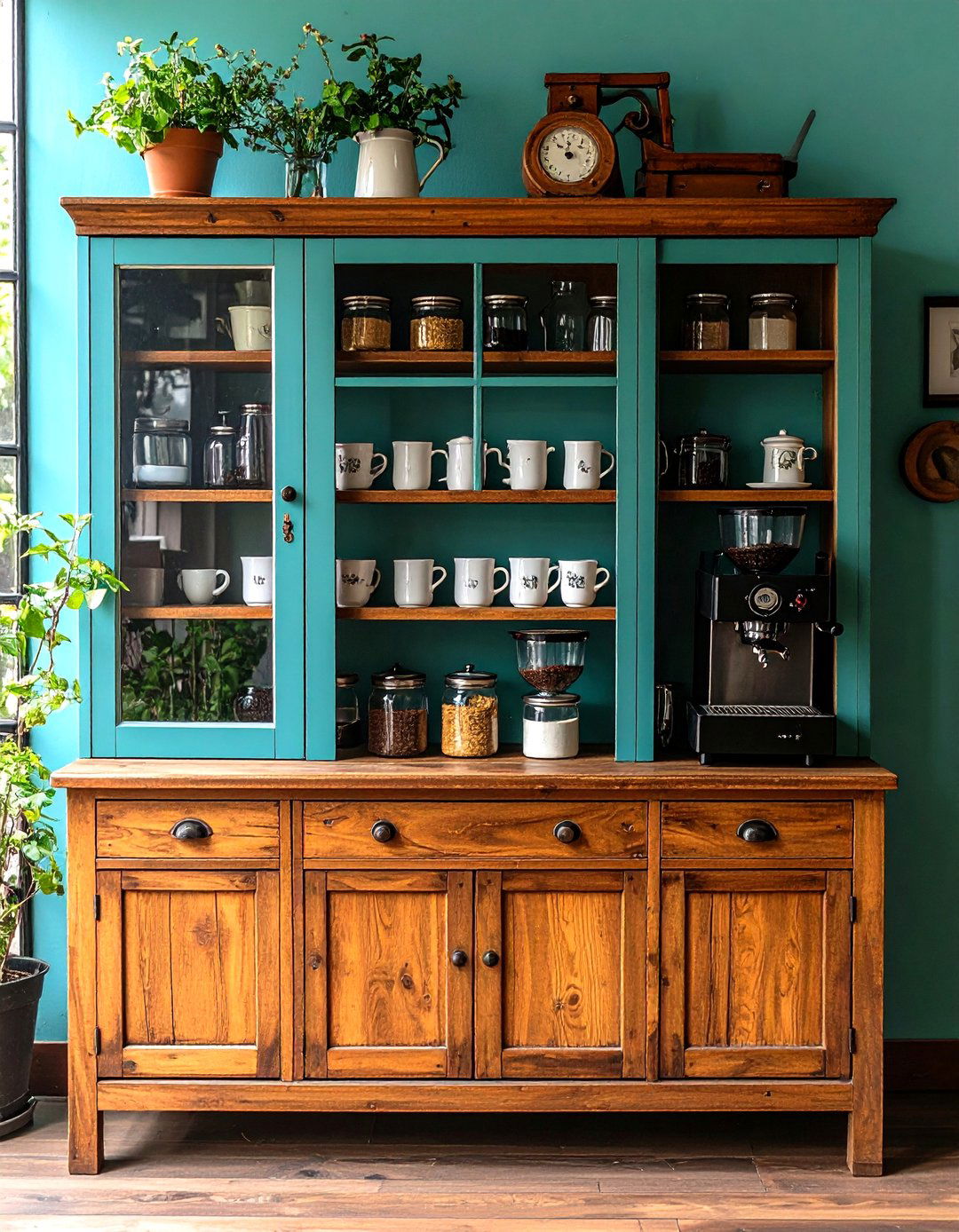
Create a dedicated coffee and beverage station that combines farmhouse charm with modern convenience for your daily routines. What's a farmhouse kitchen if you can't put the kettle on? You'll always want to be ready for coffee or tea, and this steel kettle is functional, but still a little hygge. Install open shelving or a vintage hutch to display beautiful ceramic mugs, glass jars filled with coffee beans, and a collection of vintage pitchers and serving pieces. A stand-alone glass-front pine hutch stores pitchers and serving pieces creating both storage and display. Choose appliances in vintage-inspired finishes or colors that complement your farmhouse aesthetic, and add personal touches like a vintage scale, wooden cutting boards used as trivets, or a small potted herb garden for fresh mint and other beverage garnishes. This dedicated area keeps countertops organized while creating a welcoming spot for morning routines and afternoon gatherings with friends and family.
19. Farmhouse Kitchen Herb Gardens and Natural Elements
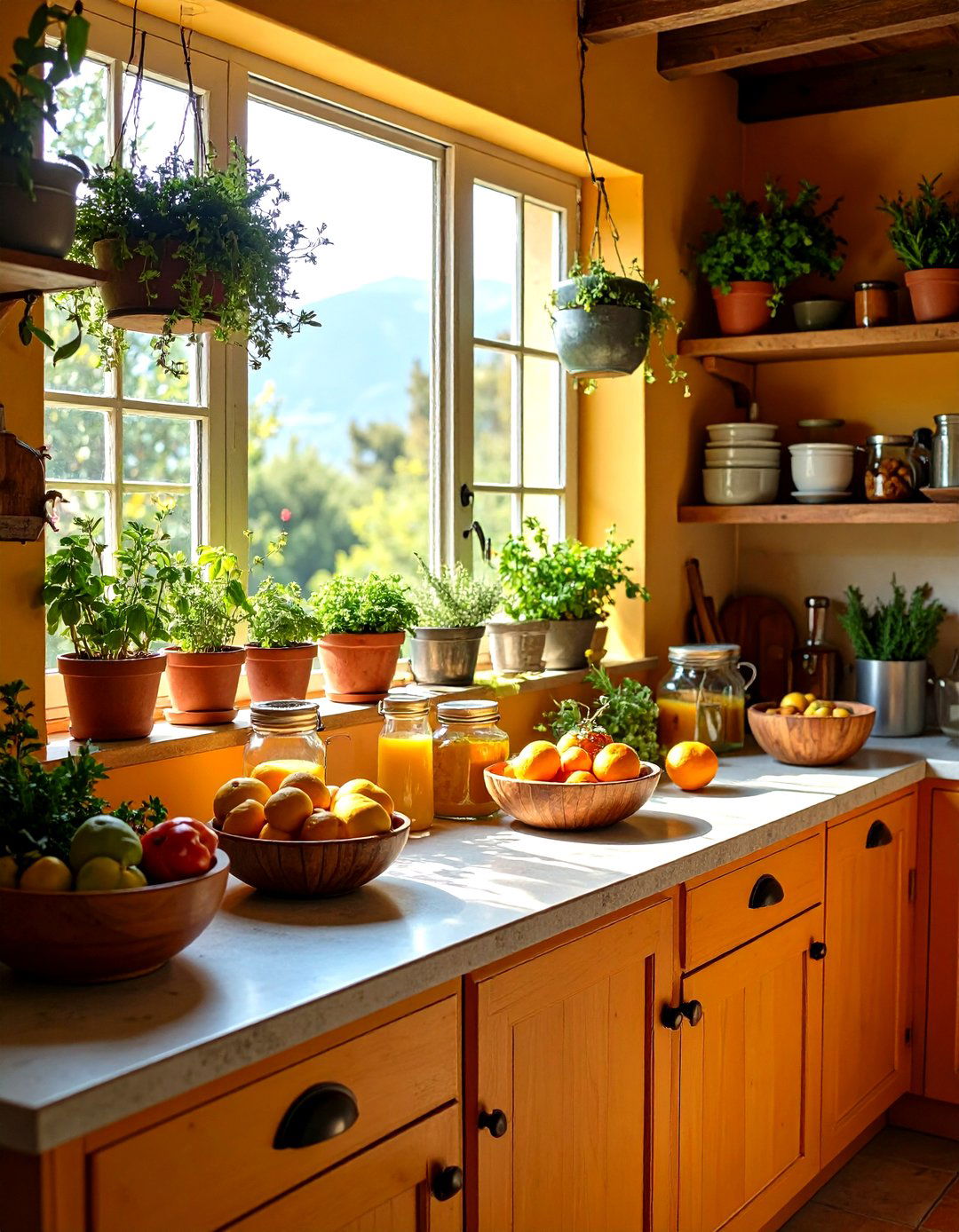
Bring the outdoors inside with an integrated herb garden and natural elements that enhance your farmhouse kitchen's connection to nature. Bring some green into the kitchen with this dainty planter, and try planting a variety of hard herbs to have close at hand. Install a windowsill herb garden using vintage galvanized containers, mason jars, or wooden boxes that complement your farmhouse aesthetic while providing fresh ingredients for cooking. Many farmhouse style rooms feature olive trees. Whether you go real or faux, weave one into your kitchen design, placing it on the countertop or table. Perch understated animal sculptures up with your dry goods or bookend them on either side of your cookbooks. They bring in a little more of the natural world while contributing some new texture. Consider larger potted plants like fiddle leaf figs or olive trees in corners, and incorporate natural elements like wooden bowls filled with seasonal fruit, woven baskets for storage, and fresh flowers in simple mason jars or ceramic pitchers throughout the space.
20. Vintage Farmhouse Kitchen Collections and Display Ideas
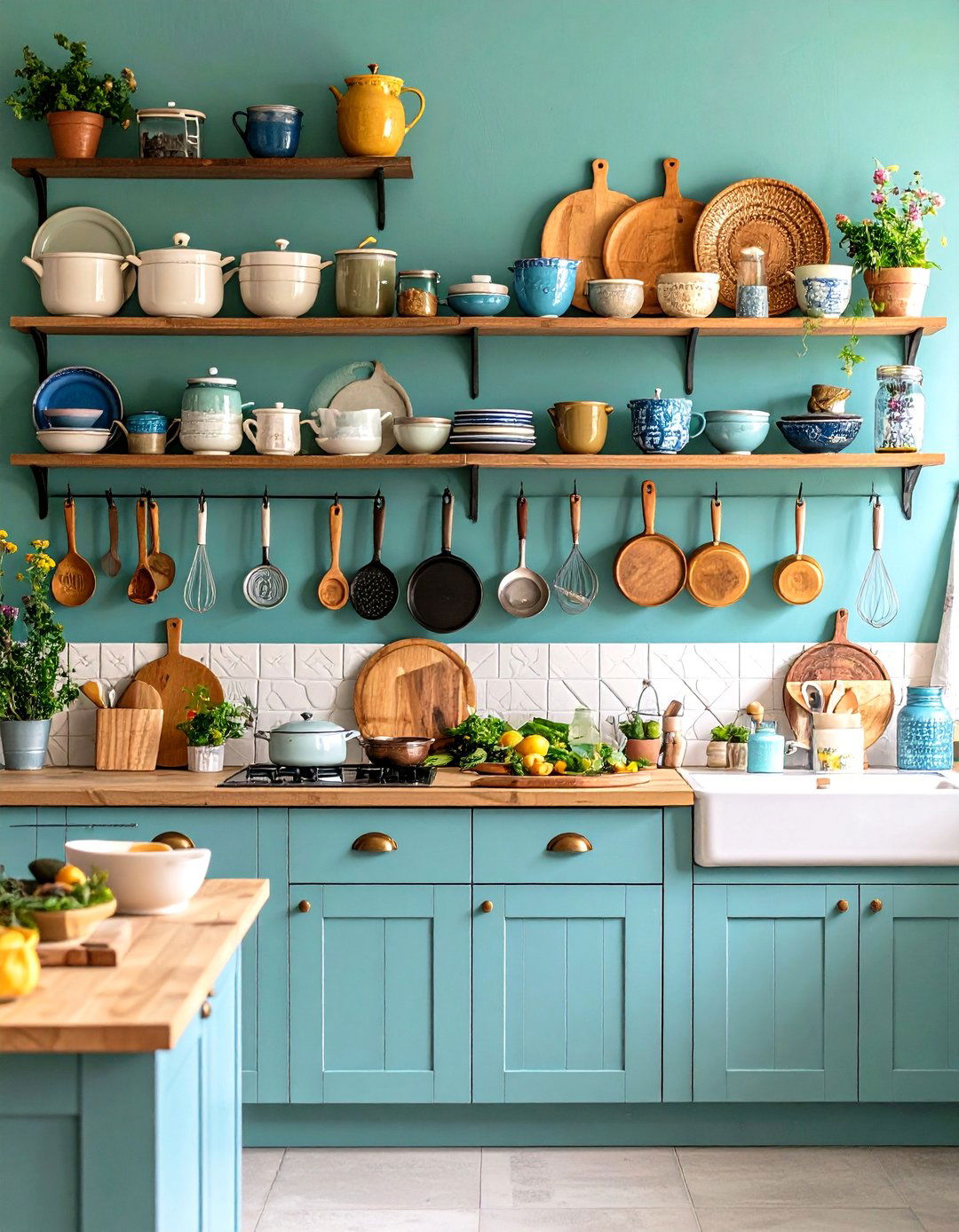
Showcase meaningful collections and vintage finds that tell your family's story while enhancing your farmhouse kitchen's authentic character. Hanging plates and serving dishes on the wall is one of the most charming details of a classic farmhouse kitchen, creating visual interest while celebrating functional beauty. Pull out your prized collections, and put them on full display! This circa-1890s home came with most of the built-ins, including the kitchen's tall cupboard that holds her extensive ironstone collection. Give your farmhouse kitchen a rustic appeal by hanging up your aesthetically pleasing baking pans on the wall for both decoration and easy access. Group vintage mixing bowls, display mason jar collections filled with colorful dried beans or grains, and arrange antique kitchen tools like wooden spoons and vintage whisks in ceramic crocks. Keep essentials on hand for no-fuss farmhouse style. Glass canisters, stacks of dishes, cutting boards, and a crock of cooking utensils make this kitchen both highly functional and inviting. These personal touches create the collected-over-time aesthetic that makes farmhouse kitchens feel like true family gathering spaces.
Conclusion:
Farmhouse kitchens remain timeless because they successfully balance beauty with functionality, creating spaces that welcome both everyday family meals and special gatherings. What's great about farmhouse kitchens—aside from the apron-front sinks, painted beadboard, and layers of personality—is the overall timeless quality. Simply put: A well-designed farmhouse kitchen will last. Whether you embrace rich, moody hues like mushroom, burgundy, and sage green dominating cabinetry, while dark woods such as darker oak add depth for 2025's transitional cottage style, or prefer classic white and cream tones with natural wood accents, these design ideas provide the foundation for creating your perfect farmhouse kitchen. The main appeal of the transitional cottage style is its timelessness. It bridges the gap between historical and contemporary design, creating spaces that feel classic yet relevant. By incorporating authentic materials, thoughtful storage solutions, and personal collections, you'll create a kitchen that truly serves as the heart of your home, reflecting both current trends and enduring farmhouse principles that celebrate honest craftsmanship, natural beauty, and the joy of gathering together.


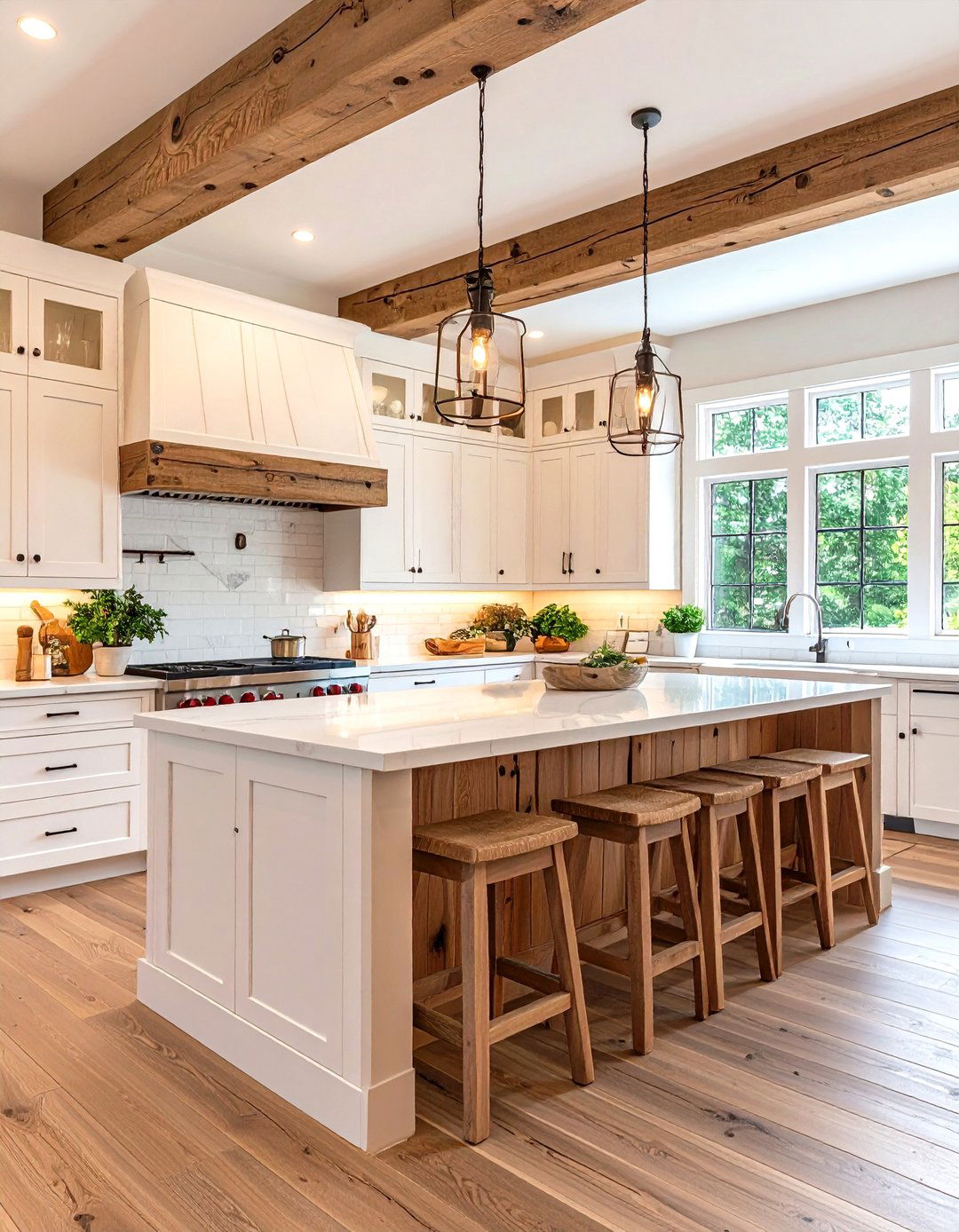
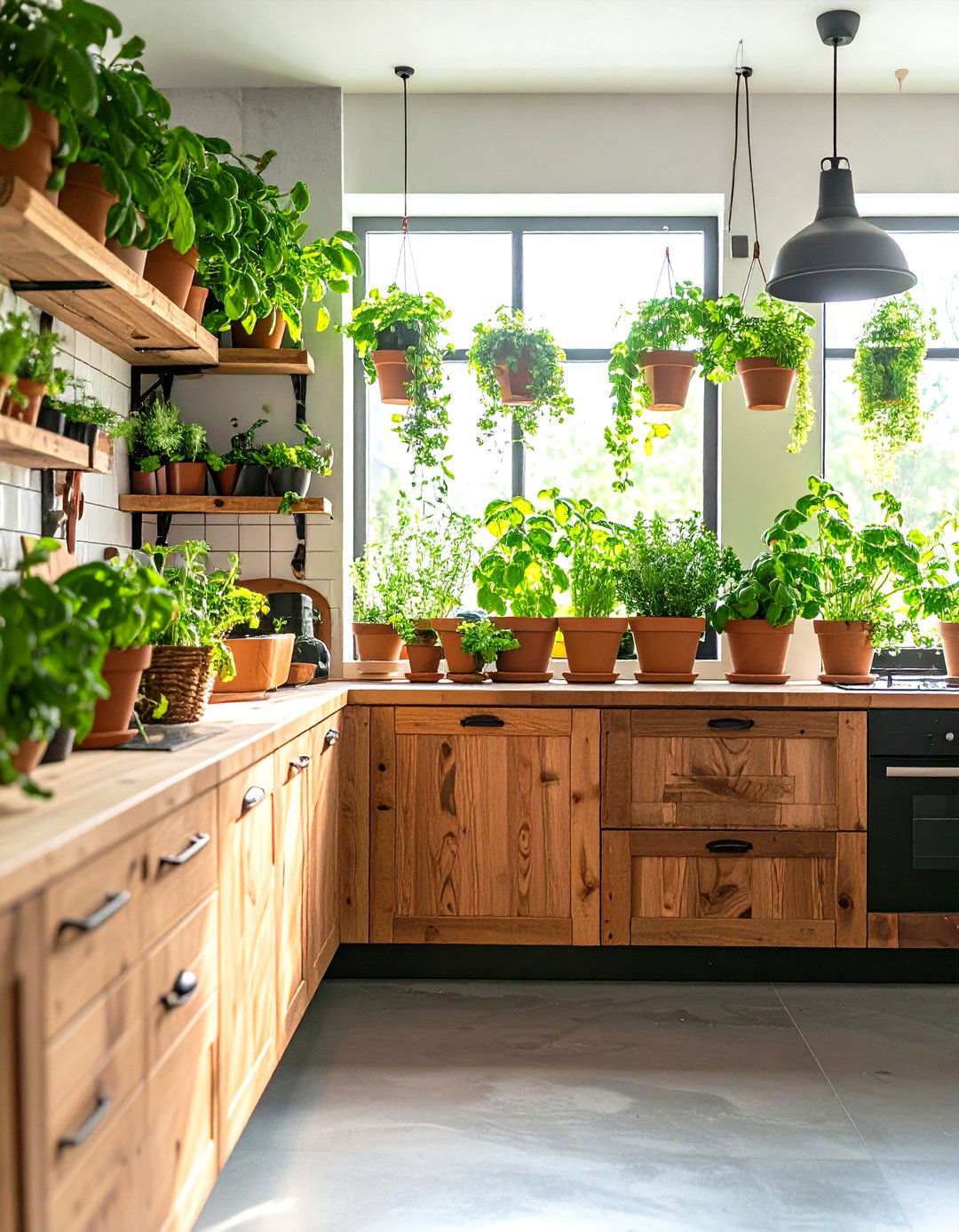
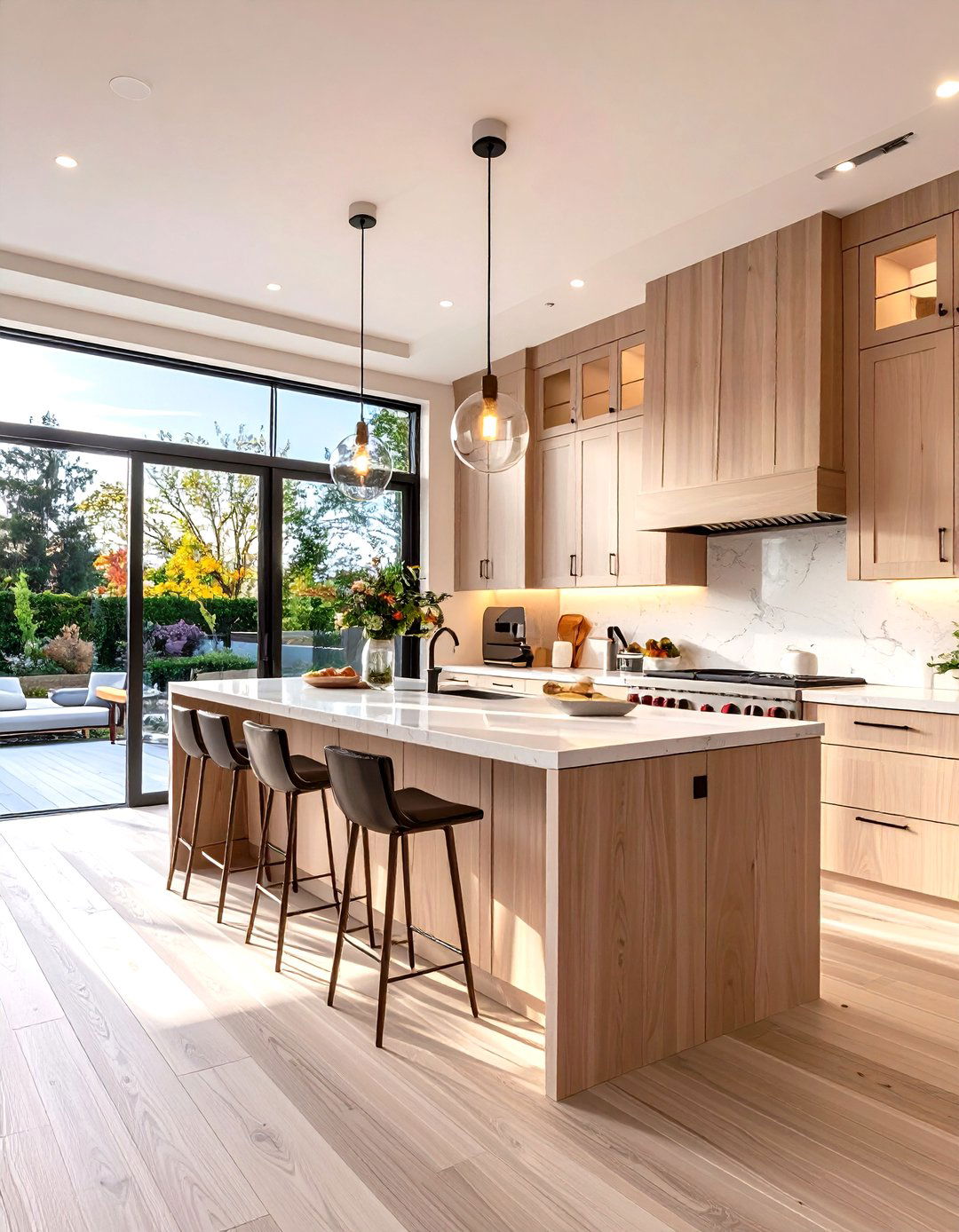
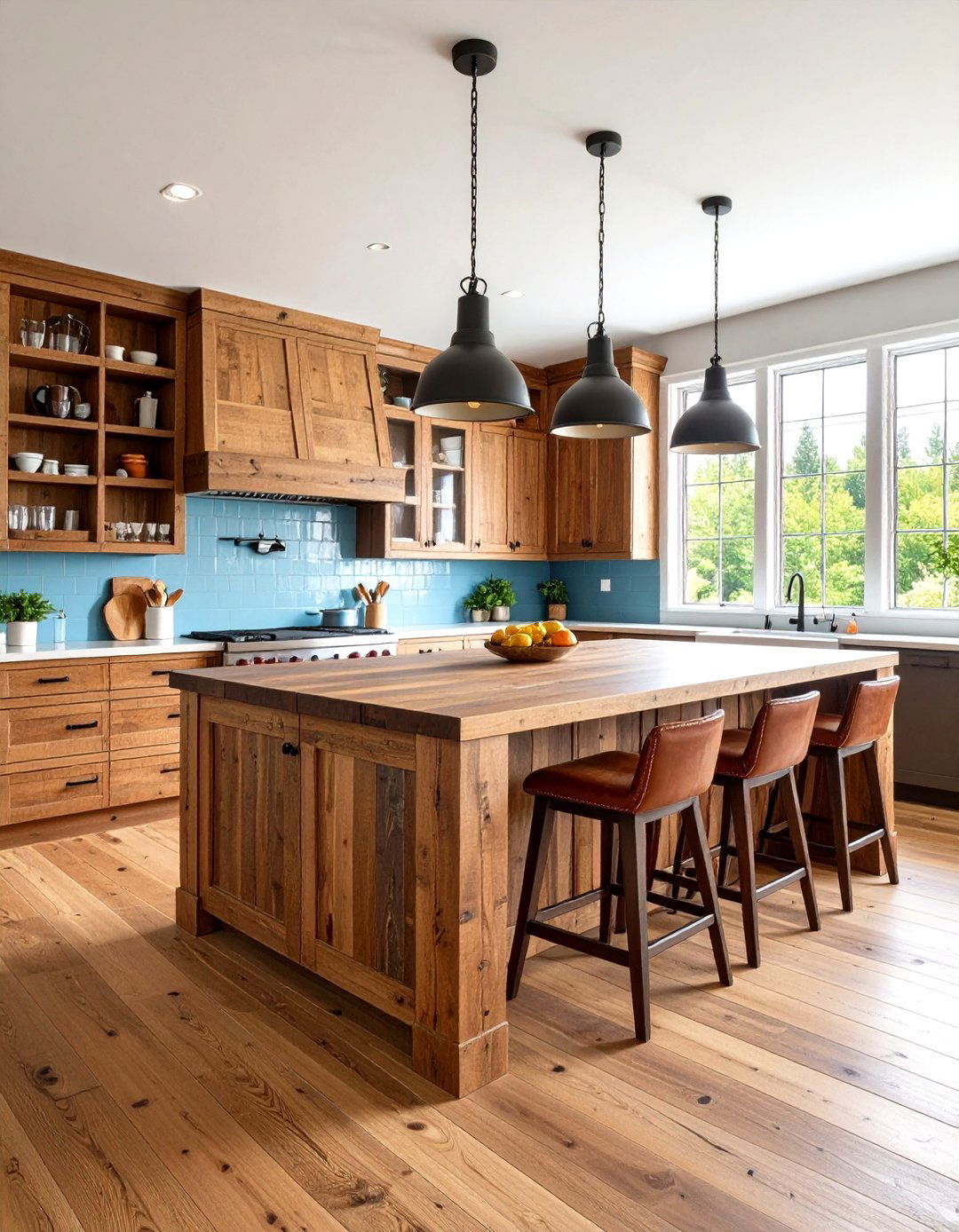

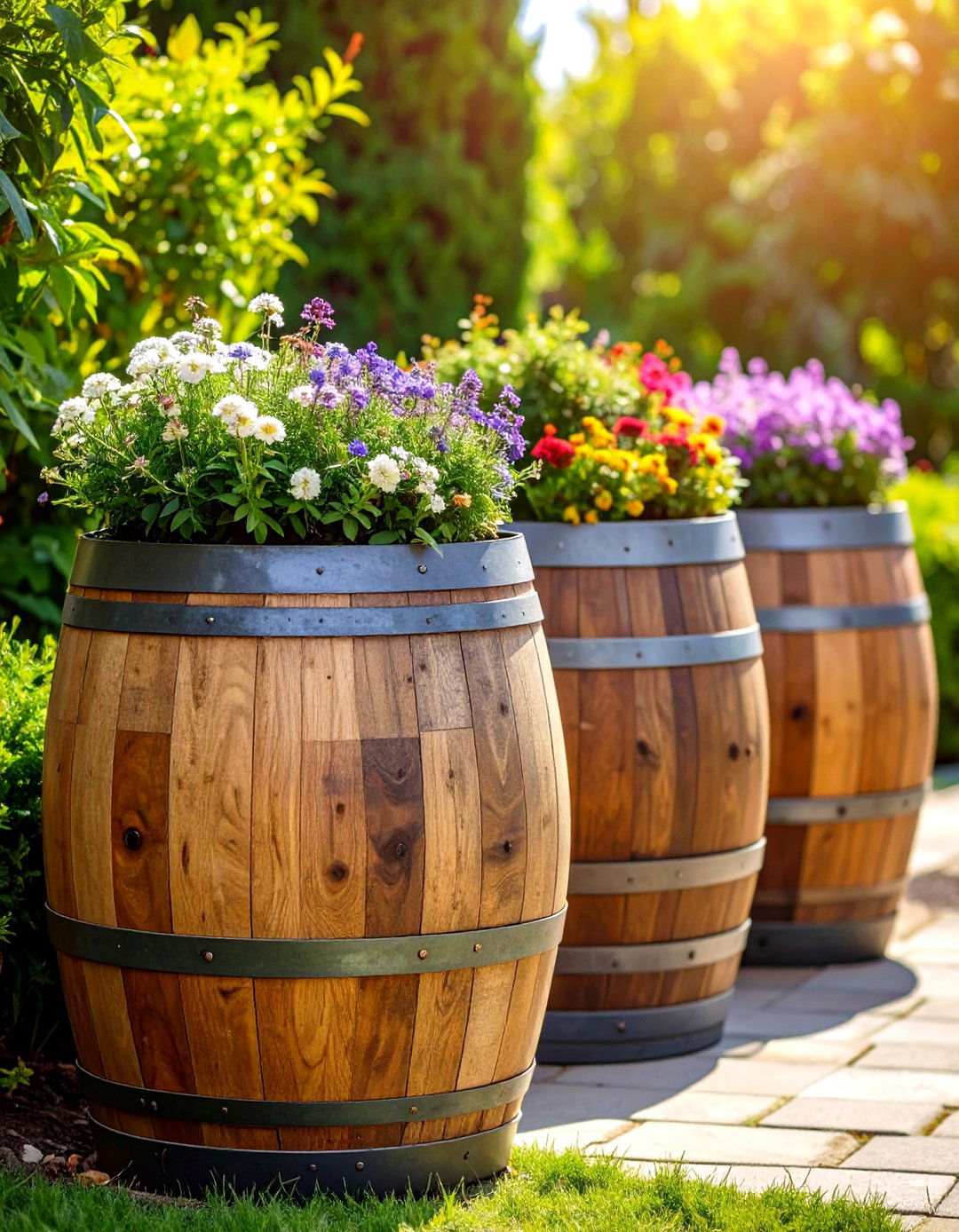
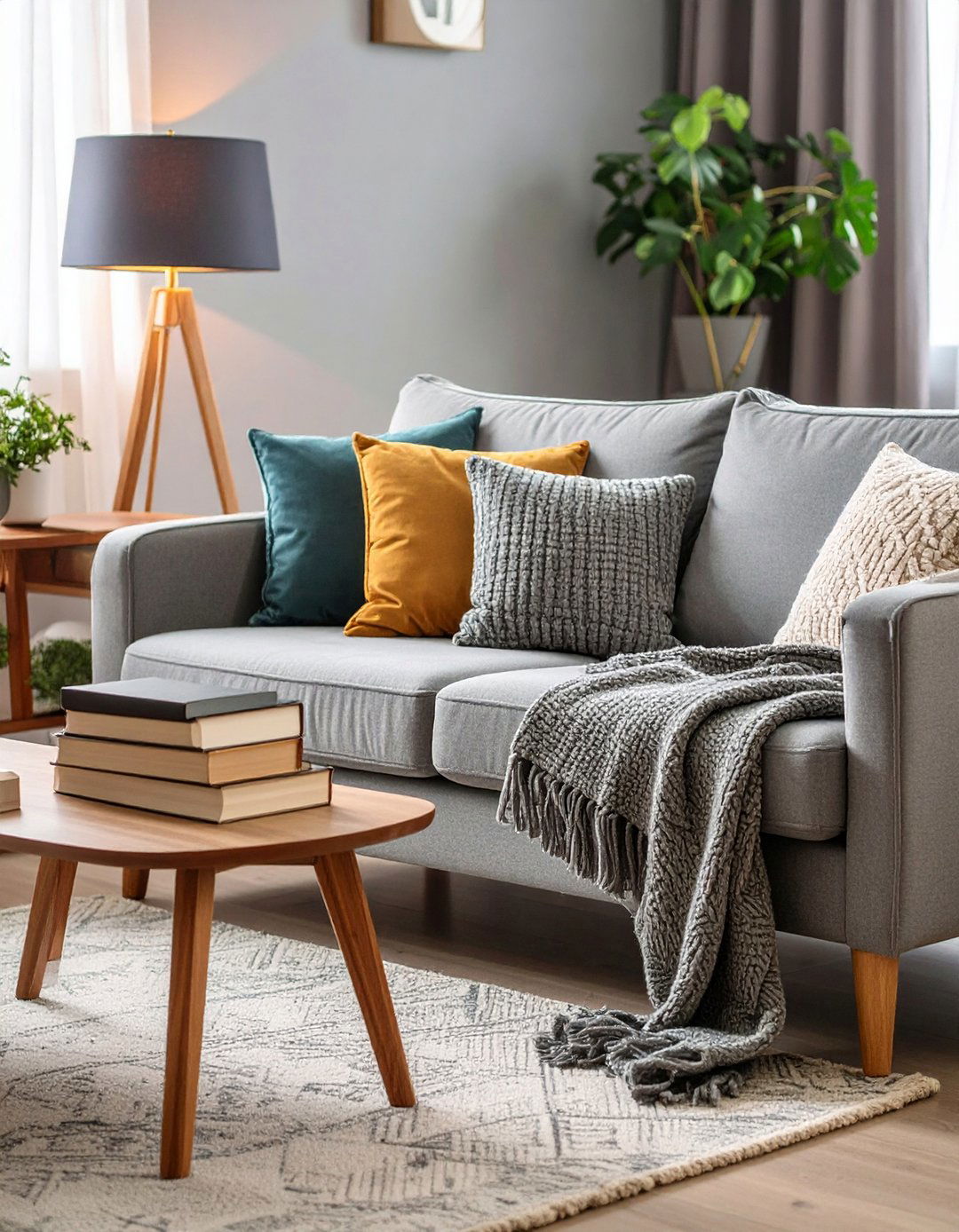
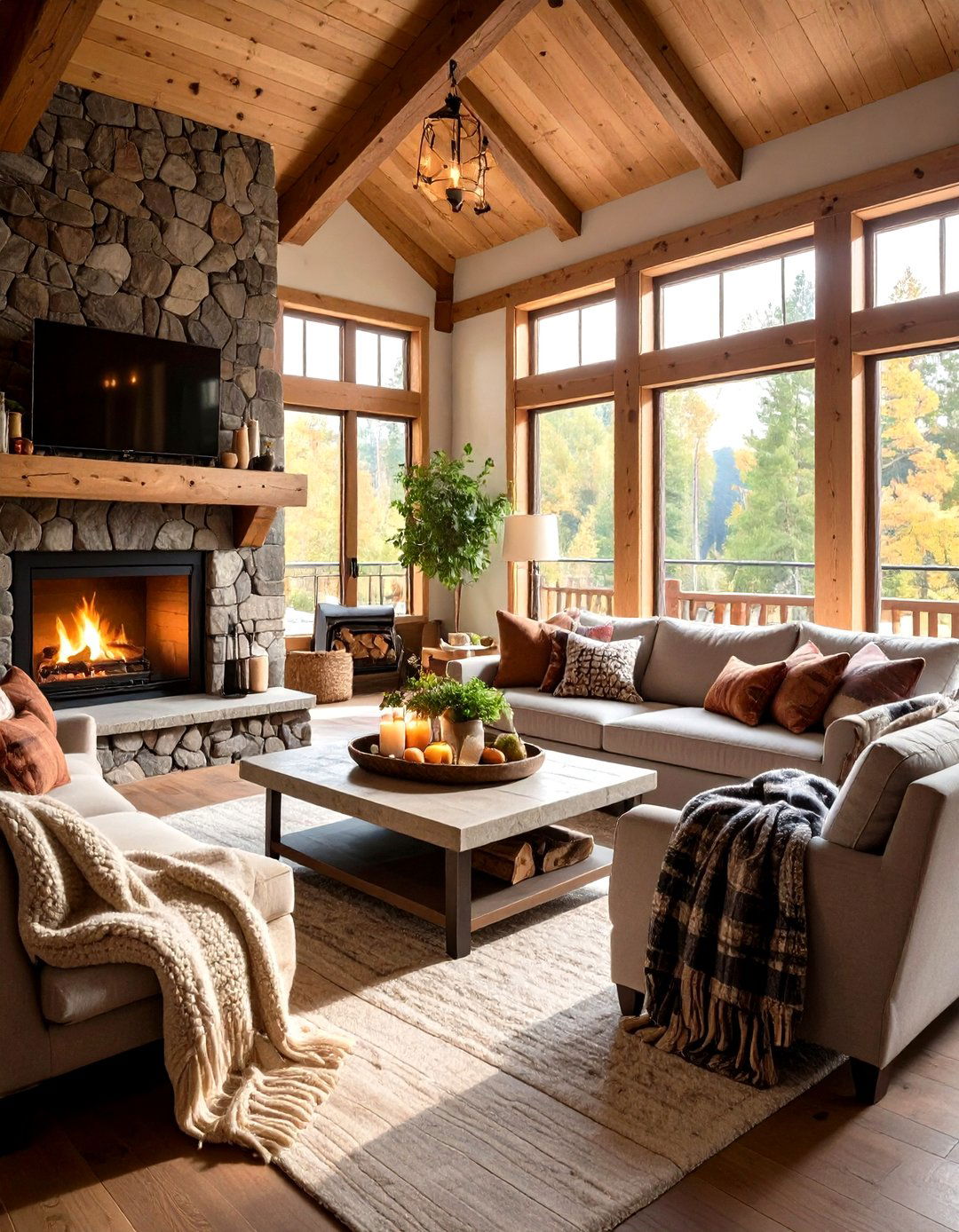

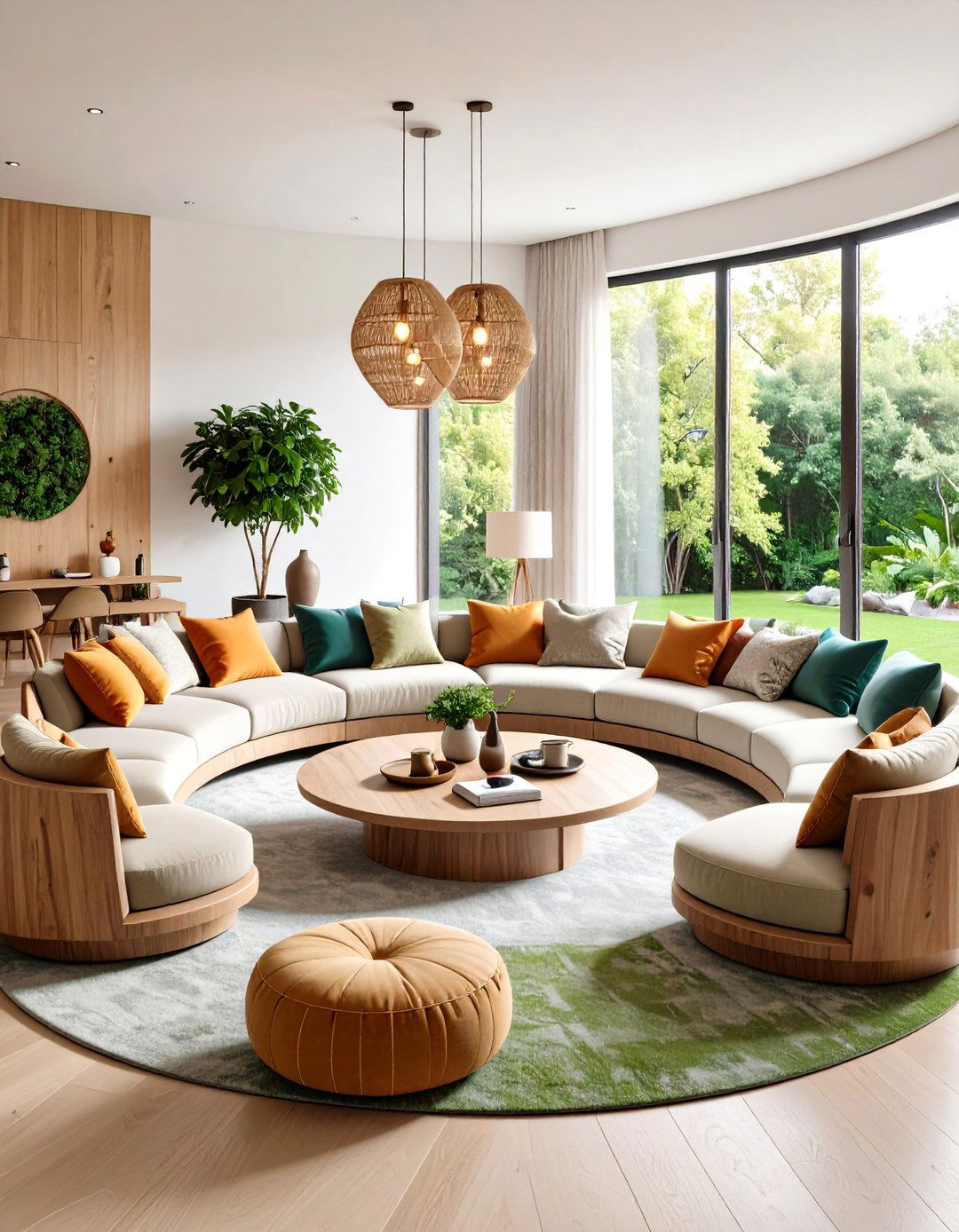
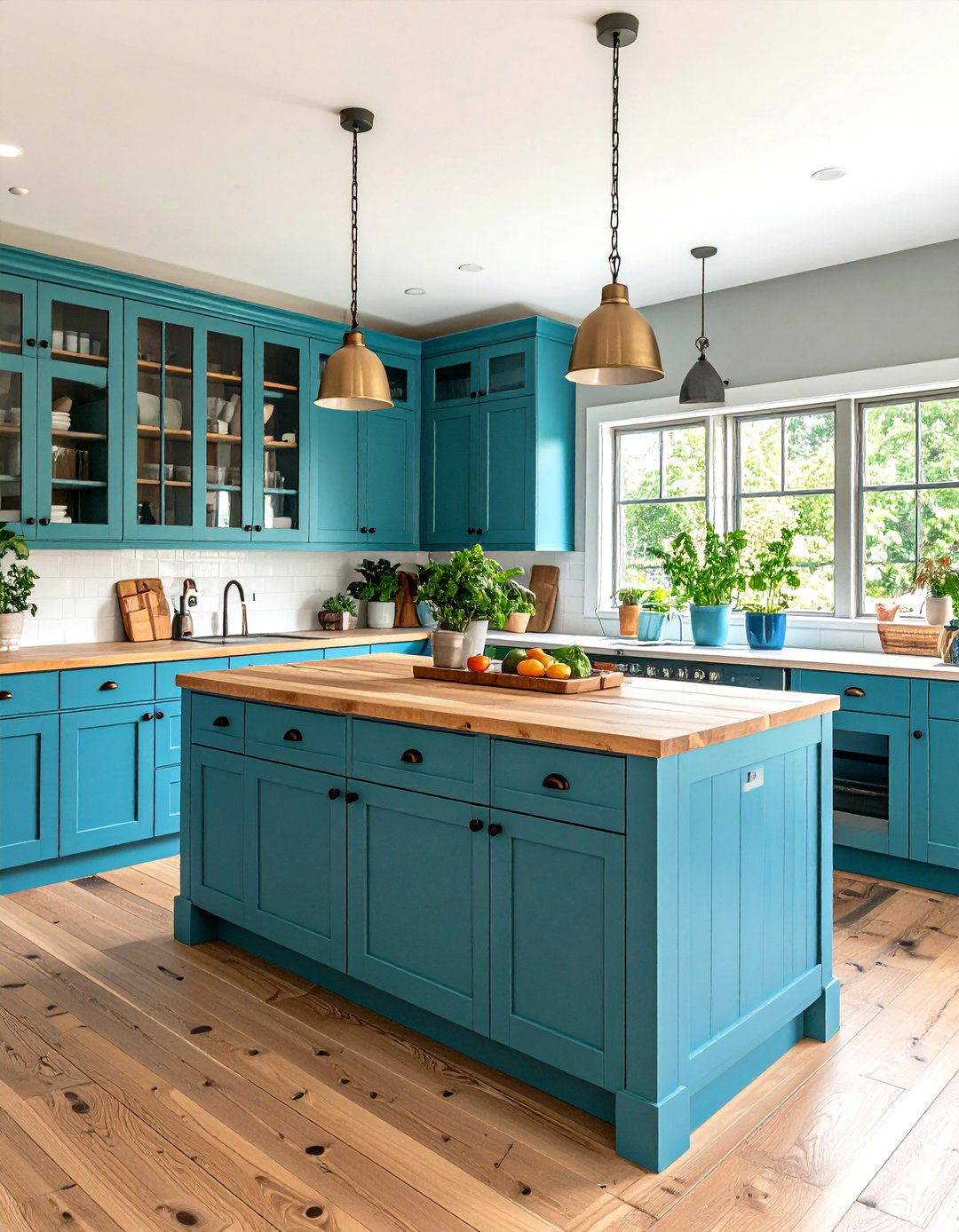
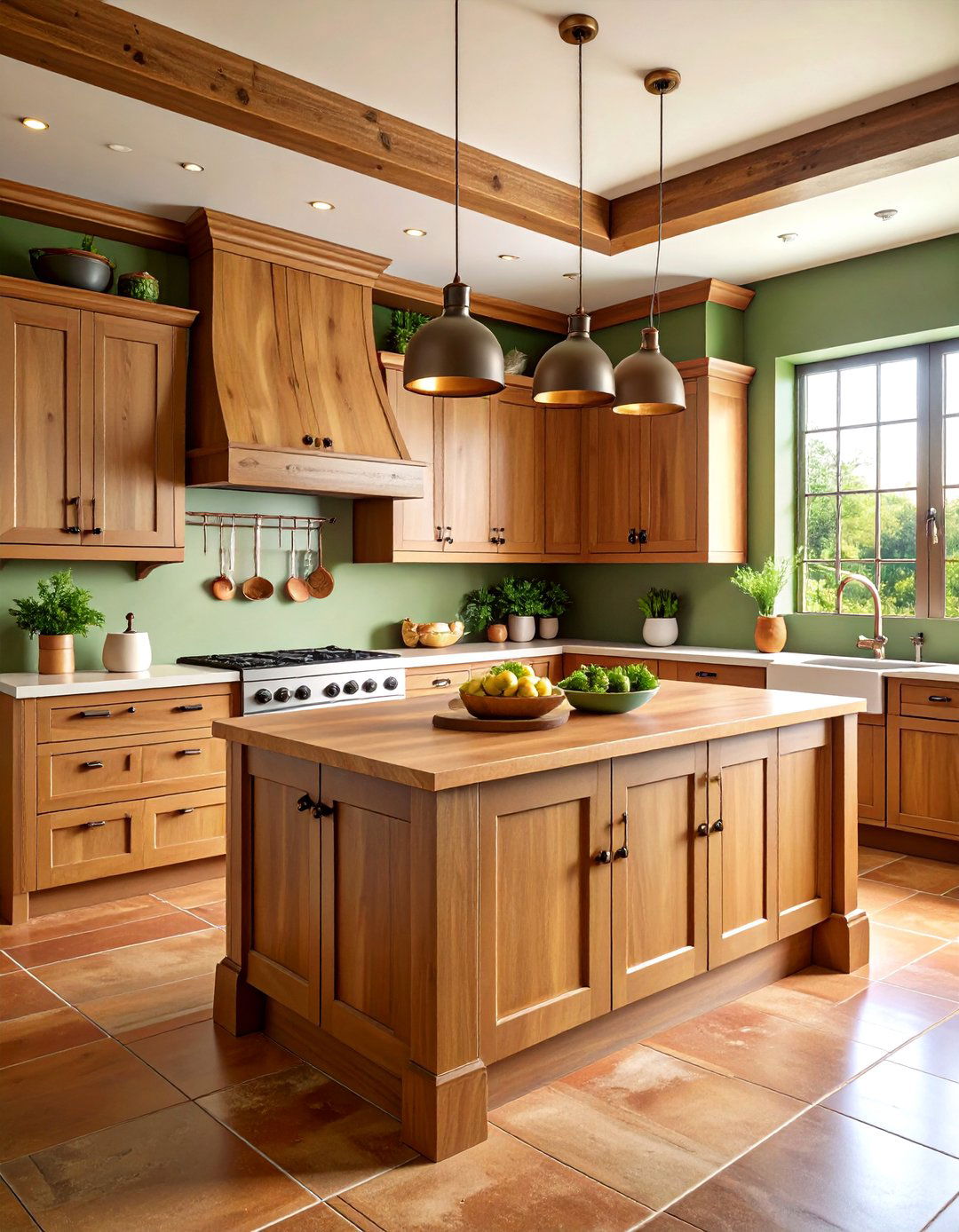
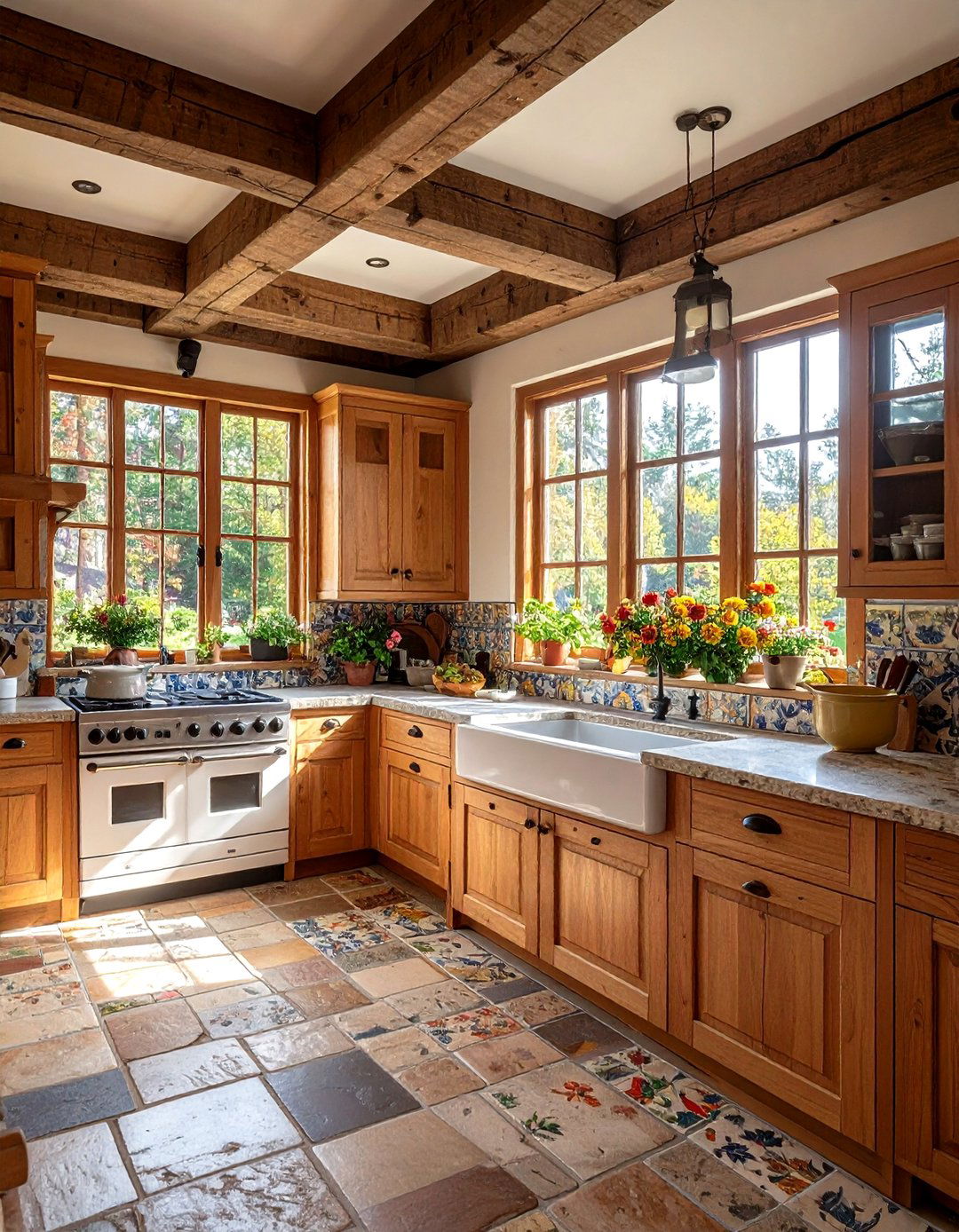
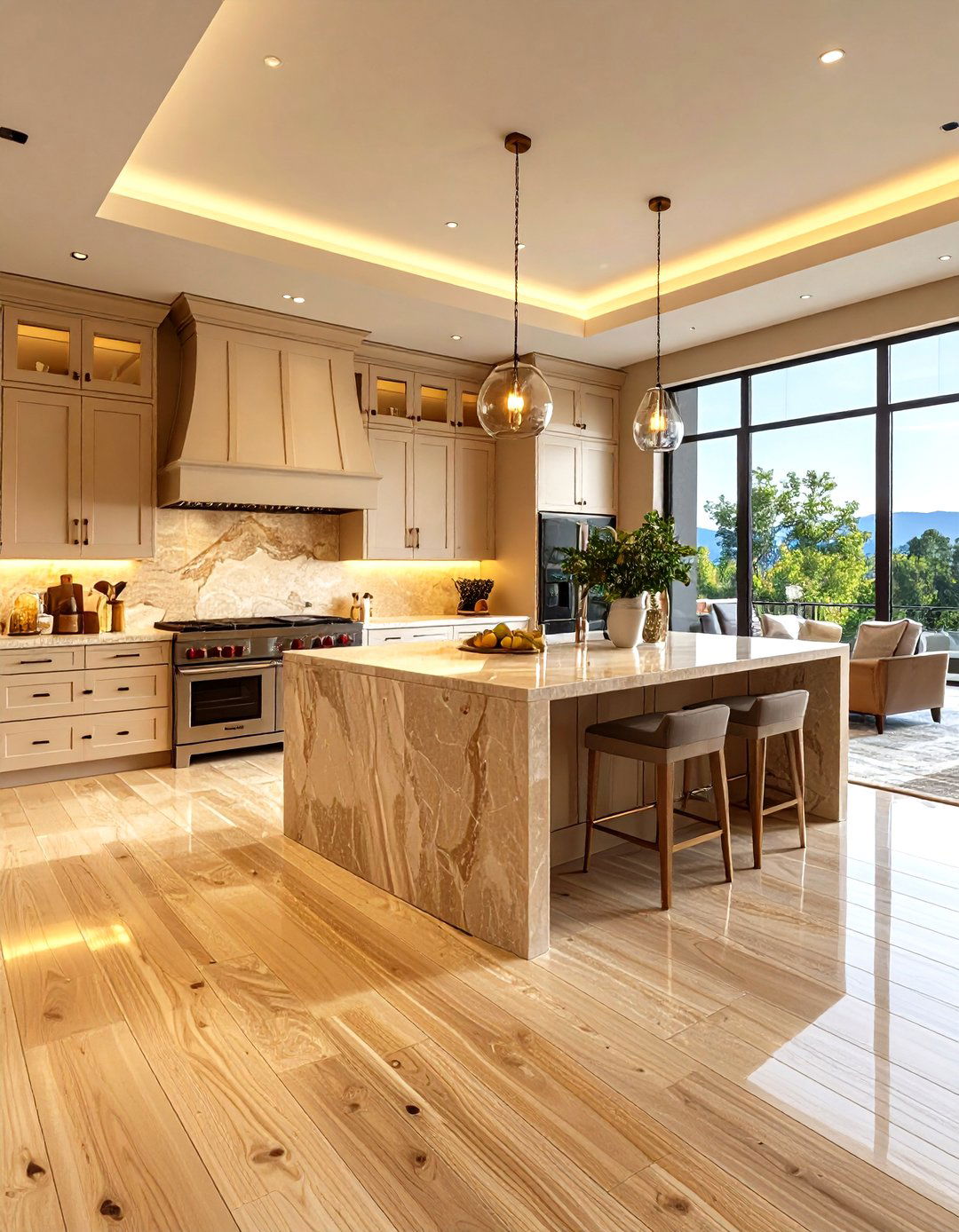
Leave a Reply